With over 20 million inhabitants each, Shanghai and Beijing are among the “hypercities” of the Global South, including Delhi, São Paulo, Dhaka, Cairo, and Mexico City, far surpassing the “megacities” of the Global North like London, Paris, or New York1. Walking the streets in China’s cities, you will however, quickly notice one marked difference – the absence of large slums or pervasive homelessness that is so common to most of the rest of the world. Why did mass urbanization not create large slums in China?When reform and opening up began in the late 1970s, 83 percent of China’s population lived in the countryside. By 2021, the proportion of the rural population had fallen to 36 percent. During this period of mass urbanization, over 600 million people migrated from rural areas to cities. Today, there are 296 million internal “migrant workers” (农民工, nóngmín gōng), comprising over 70 percent of the country’s total workforce2. Migrant workers became the economic engine of China’s rapid growth, which created the world’s largest middle class of 400 million people. This historic migration came with many challenges, including the emergence of “urban villages” that had poor living conditions and inadequate infrastructure. Although basic amenities – such as running water, electricity, gas, and communications – were provided, sanitation, public services, fire safety, and other such amenities resembled that of rural villages. Due to lower rents and the lack of other affordable housing, urban villages are largely inhabited by migrant workers. With the acceleration of urbanization in the 2000s, the Chinese government began to promote large-scale transformation of the old areas of the cities, focusing on renovation of historically deteriorated neighborhoods and the removal of dangerous housing. Between 2008 and 2012, 12.6 million households in urban villages were rebuilt nationwide3. At the same time, efforts were made to construct public rental or low-rent housing. For instance, in Shanghai today, families of three or more people with a monthly income of less than 4,200 yuan per person can apply for low-rent housing, with the monthly rent being just a few hundred yuan (or five percent of monthly household income). In 2022, the central government announced the construction of 6.5 million units of low-cost rental housing in 40 cities, representing 26 percent of the total new housing supply in the 14th Five-Year Plan (2021-2025)4. Indeed the explosion of rural-to-urban migration in recent decades is not a phenomenon unique to China. While understanding that there are different definitions of “slums” used by countries and international organizations, they all point to the same tendency: since the 1970s, slum growth outpaced urbanization rates across the Global South. China’s efforts to upgrade existing precarious housing or build new affordable housing does not, however, explain why China did not develop slums like in so many other countries. Urbanization in China, therefore, must be understood within the context of socialist construction. What is the “hukou” system and what does it have to do with socialism? One unique characteristic of China’s urbanization process is that, although policies encouraged migration to cities for industrial and service jobs, rural residents never lost their access to land in the countryside. In the 1950s, the Communist Party of China (CPC) led a nationwide land reform process, abolishing private land ownership and transforming it into collective ownership. During the economic reform period, beginning in 1978, a “Household Responsibility System” (家庭联产承包责任制 jiātíng lián chǎn chéngbāo zérèn zhì) was created, which reallocated rural agricultural land into the hands of individual households. Though agricultural production was deeply impacted, collective land ownership remained and land was never privatized. Today, China has one of the highest homeownership rates in the world, surpassing 90 percent, and this includes the millions of migrant workers who rent homes in other cities. This means that when encountering economic troubles, such as unemployment, urban migrant workers can return to their hometowns, where they own a home, can engage in agricultural production, and search for work locally. This structural buffer plays a critical role in absorbing the impacts of major economic and social crises. For example, during the 2008 global financial crisis, China’s export-oriented economy, especially of manufactured goods, was severely hit, causing about 30 million migrant workers to lose their jobs. Similarly, during the Covid-19 pandemic, when service and manufacturing jobs were seriously impacted, many migrant workers returned to their homes and land in the countryside. Beyond land reform, a system was created to manage the mass migration of people from the countryside to the cities, to ensure that the movement of people aligned with the national planning needs of such a populous country. Though China has had some form of migration restriction for over 2,000 years, in the late 1950s, the country established a new “household registration system” (户口 or hùkǒu) to regulate rural-to-urban migration. Every Chinese person has an assigned urban or rural hukou status that grants them access to social welfare benefits (subsidized public housing, education, health care, pension, and unemployment insurance, etc.) in their hometown, but which are restricted in the cities they move to for work. While reformation of the hukou system is ongoing, the lack of urban hukou status forces many migrant parents to spend long periods away from their families and they must leave their children in their grandparents’ care in their hometowns, referred to as “left-behind children” (留守儿童 liúshǒu értóng). Though the number has been decreasing over the years, there are still an estimated seven million children in this situation. Today, 65.22 percent of China’s population lives in cities, but only 45.4 percent have urban hukou. Although this system deterred the creation of large urban slums, it also reinforced serious inequities of social welfare between urban and rural areas, and between residents within a city based on their hukou status. How does the Chinese government deal with homelessness? In the early 2000s, the issues of residential status, rights of migrant workers, and treatment of urban homeless people became a national matter. In 2003, the State Council – the highest executive organ of state power – issued the “Measures for the Rescue and Management of Itinerant and Homeless in Urban Areas”5. The new regulation created urban relief stations providing food rations and temporary shelters, abolished the mandatory detention system of people without hukou status or housing, and placed the responsibility on the local authorities for finding housing for homeless people in their hometowns. Under these measures, cities like Shanghai have set up relief stations for homeless people. When public security – the local police – and urban management officials encounter homeless people, they must assist them in accessing nearby relief stations. All costs are covered by the city’s fiscal budget. For example, the relief management station in Putuo District (with the fourth lowest per capita GDP of Shanghai’s 16 districts and a resident population of 1.24 million), provided shelter and relief to an average of 24.3 homeless people a month from June 2022 to April 2023, which could include repeated cases6. Relief stations provide homeless people with food and basic accommodations, help those who are seriously ill access healthcare, assist them to return to the locations of their household registration by contacting their relatives or the local government, and arrange free transportation home when needed. Upon returning home, the local county-level government is responsible to help the homeless people, including contacting relatives for care and finding local employment. For a very small number of people who are elderly, have disabilities, or do not have relatives nor the ability to work, the local township people’s government, or the Party-run street office, will provide national support for them in accordance with the “method of providing for extremely impoverished persons”, which is stipulated in the 2014 “Interim Measures for Social Assistance”. The content of the support includes providing basic living conditions, giving care to impoverished individuals who cannot take care of themselves, providing treatment for diseases, and handling funeral affairs, etc. This series of relief management measures ensure that administrative law enforcement personnel in the city do not simply expel homeless people from the city, but must guarantee that they receive proper assistance, in terms of housing, work, and support systems. What are the current challenges of urbanization, migration, and inequality? While creating relief centers is an important advancement, it is clear that shelters are not a structural solution and they alone cannot meet the needs of a metropolis like Shanghai of 25 million people, let alone the country’s 921 million urban residents. The government has been implementing many structural reforms to address inequality, and to make the cities and the countryside more liveable. In his report to the 20th National Congress of the CPC, President Xi Jinping said: “We have identified the principal contradiction facing Chinese society as that between unbalanced and inadequate development and the people’s ever-growing needs for a better life, and we have made it clear that closing this gap should be the focus of all our initiatives.”7 The unbalanced and inadequate development points to the gap between the countryside and cities, between underdeveloped and industrialized regions, and between the rich and poor. On a broader scale, the anti-poverty campaigns – highlighted by the eradication of extreme poverty in 2020 – and the rural revitalization strategy have helped alleviate the pressure of migrant workers moving to the cities. The government has invested substantial funds and resources, using diversified ways to alleviate poverty beyond income-transfer schemes, including developing rural industry, education, health care, and infrastructure8. These measures fundamentally improved the living and employment environment in rural areas and created more opportunities so that people have the option to stay and work in the countryside. For example, every year, more migrants are returning from cities back to their hometowns, which increased from 2.4 million (2015) to 8.5 million people (2019). Over the last decade, China has implemented reforms to balance the easing of hukou residency requirements and to improve the social welfare of migrant workers, while ensuring that urbanization and population distribution responds to the country’s needs. Since 2010, major cities have gradually relaxed the household registration restrictions for school admission, allowing children of migrant workers to attend public schools like children with local hukou. Furthermore, according to the 2019 Urbanization Plan, cities with populations below three million people are required to remove all hukou restrictions, while bigger cities (under five million) can begin to relax restrictions. The 14th Five-Year Plan (2021-2025) and the country’s economic strategy until 2035 focus on redistributing income through tax reform, reducing the gap between the rich and poor, and removing the barriers that prevent millions of migrant workers from enjoying the full benefits of urban life. In 2021, the government invested US$5.3 billion to relax the hukou residency rules, and to also boost urban migrants’ spending power as part of the country’s “dual circulation” policy9. These efforts to tackle the “three mountains” of the high cost of housing, education, and health care faced by all Chinese people, including migrants, is at the center of the government’s vision and policy reforms towards “common prosperity” for all its citizens and the building of a modern socialist society.
AuthorDongsheng This article was produced by DongSheng. Archives July 2023
0 Comments
7/17/2023 A Brutal Colonial Legacy Is Tinder for the Fires That Are SweepingAcross France By: Vijay PrashadRead NowOn Saturday, July 1, 2023, a large crowd gathered inside and around the Ibn Badis Mosque in Nanterre, France, where a seventeen-year-old boy, Nahel M, was mourned and then later buried. Nahel M, of Algerian and Tunisian heritage, was shot dead by a police officer during a traffic stop. It was clear that the police officer had not acted in self-defense but had shot the young man in cold blood. A wave of outrage swept through the country, with protests and riots breaking out across France. French President Emmanuel Macron sent out security forces to stem the protests, which inflamed the protestors whose anger at the police is at very high levels. Antipathy toward the police was confirmed by the language of the police unions (Alliance Police Nationale and UNSA), who called the protestors “vermin” and “savage hordes” and said that “it’s no longer enough to call for calm; it must be imposed.” This is an act of war by the French police against the French population who come from France’s former colonies. President Macron called the killing of Nahel M “inexplicable,” but this is hardly a credible response. Racism against people of Arab and African descent in France has become almost banal, something that takes place and no longer raises an eyebrow. When France’s Ministry of the Interior released the numbers of racist attacks and killings from 2021, the French National Consultative Commission on Human Rights (CNCDH) said that the situation was “alarming.” Sophie Elizéon, chief of the inter-ministerial delegation for the fight against racism, anti-Semitism, and anti-LGBT hate (DILCRAH) said, “What is being reported from the ground is the exacerbation of unabashed [behavior.]” The killing of Nahel M, in this context, was absolutely explicable—it was the result of a general social toxicity towards minorities and one that is given expression through the police force. No wonder the Office of the United Nations High Commissioner for Human Rights said, “This is a moment for the country to seriously address the deep issues of racism and discrimination in law enforcement.” Deep Issues of Colonialism France never really came to terms with its colonial heritage or its colonial mindset. French colonizers went to the Americas in the 16th century, and a hundred years later set up a number of plantations in the Caribbean that operated a slave-based economy. At the heart of the French colonial enterprise was the island of Hispaniola, half of which is today’s Haiti, and from where the French Empire derived an enormous volume of its considerable wealth. France’s attitude to its colonies and to their urge for freedom is encapsulated in the story of Haiti. When the Afro-descendent population of Haiti rose up in a major rebellion in 1791, France—bubbling with its own Revolution of 1789—nonetheless denied the Haitians of their freedom and fought till 1804 to deprive Haiti of its independence. Even after Haiti defeated the French planters, the French state—with the full backing of the United States—forced the Haitian government in 1825 to pay an enormous indemnity of 150 million French francs, which Haiti only paid off in 1947 to Citibank (which bought the debt after 1888). The reticence of France to allow its own universal pretensions (Liberté, Egalité, Fraternité—the phrase from the revolution that was the center of the 1958 Constitution of the Third Republic) to be heard in the colonies ran from 1804 in Haiti to the wars against national liberation by the French from Algeria to Vietnam in the 1950s and 1960s. So ugly is that history that French students are not taught it in an unvarnished manner. If a French student is asked how many Algerians died due to the brutality of the French regime during the liberation war (1954-1962), they would be hard-pressed to come up with the real number, which is over a million; nor would those students know that when thirty thousand Algerians marched in Paris on October 17, 1961, the French police killed at least a hundred of them and threw their bodies into the River Seine, while arresting at least fourteen thousand people. This is an unacknowledged history, and an unacknowledged colonial history confounds the French public who are therefore unprepared for the colonial structures that assert themselves through the police force and through France’s continued colonial adventures. Over the course of the past six months, the governments of Burkina Faso and Mali have ejected French troops. They have argued that the 2013 French intervention, purportedly against al-Qaeda, in fact intensified the instability in the region and that France actually consorted with secessionist groups against the national states. A growing feeling of anti-French and anti-Western sentiment runs from these countries in Africa’s Sahel northwards to Algeria and Morocco, where President Macron has been heckled during recent visits. Confidence is growing in the northern Africa region, where people are now quite clear that the French interventions are not for the sake of the African people but are for the narrow interests of France. For instance, the French continue to garrison the town of Arlit, Niger, not for reasons of Mission civilisatrice, but to power the French nuclear reactors; a third of all lightbulbs in France are powered by the uranium from Arlit. There is a general swell of anti-French feeling in the country’s former colonies, now inflamed by the murder of a boy of Tunisian and Algerian heritage. Debt and the French Burden Just a few days before the murder of Nahel M, President Macron hosted the Paris Summit for a New Global Financial Pact. The idea for this summit originated with Barbados’ Prime Minister Mia Mottley, who suggested that countries that were especially climate-vulnerable—mainly low-lying island states—needed to get easier access to financing to offset the dangers of rising sea waters. Mottley had argued that the cost of mitigation—building sea walls—and the costs of disasters as well as the high cost of borrowing for green energy, made it impossible for countries such as Barbados to protect themselves or to undertake the kind of transition necessary as climate disasters increased. “What is required of us,” Mottley said, “is absolute transformation, and not reform, of our institutions.” Macron’s summit on the Financial Pact was as hollow as the promises to reform the French police or France’s colonial attitudes to the African states. Akinwumi Adesina, the head of the African Development Bank, said that “Africa alone loses $7 to $15 billion a year because of climate change, and that’s going to rise to… almost $50 billion a year by 2040. So, the world has to meet its commitment, the developed countries, of the $100 billion” pledge that they have made. Treaty obligations and promises made since at least 2009, Adesina said, have been broken. “I mean, it’s a very small amount of money compared to the scale of the problem, but by not meeting it, it has created a crisis of trust in the developing countries.” Macron and the incoming World Bank president Ajay Banga gave speeches that sounded as if they could have been given over a decade ago. Same language, same tired promises. “Hope and optimism,” said Banga, to an audience that was not feeling hopeful or optimistic. At least Macron put some tangible suggestions on the table such as a global tax on shipping, on aviation, and on the wealthy to raise $5 billion for a loss and damage fund. It is unlikely that the corporate sector, which has influence in the International Maritime Organization (who will see about the shipping taxes), will allow increased taxation in this sector. The UN Secretary-General Antonio Guterres pointed his finger at the residue of the colonial mindset and the neo-colonial structure when it comes to financing. The International Monetary Fund’s Special Drawing Rights (SDRs) are available to ameliorate the negative impact of the permanent debt crisis and to bring much-needed emergency finances to poorer countries. But even here, Guterres said, the European Union—with a total population of 447 million people—received $160 billion in SDRs, while the continent of Africa—with a total population of 1.2 billion people—received only $34 billion in SDRs. “A European citizen received on average almost 13 times more than an African citizen,” Guterres pointed out. “All this was done according to the rules. But let’s face it: these rules have become profoundly immoral.” He could have been speaking about the French police code. AuthorVijay Prashad is an Indian historian, editor, and journalist. He is a writing fellow and chief correspondent at Globetrotter. He is an editor of LeftWord Books and the director of Tricontinental: Institute for Social Research. He is a senior non-resident fellow at Chongyang Institute for Financial Studies, Renmin University of China. He has written more than 20 books, including The Darker Nations and The Poorer Nations. His latest books are Struggle Makes Us Human: Learning from Movements for Socialism and (with Noam Chomsky) The Withdrawal: Iraq, Libya, Afghanistan, and the Fragility of U.S. Power. This article was produced by Globetrotter. Archives July 2023 7/17/2023 Silence of the Lambs: How the Russian Communists have responded to the Wagner mutiny and Prigozhin’s Empire By: John HelmerRead NowThe calls have begun in Moscow, starting among the war blogs and battlefield reporters, for keeping intact Yevgeny Prigozhin’s conglomerate of military budget contractors. The reason argued is that they have established themselves so strategically in the logistics of the military services that they cannot be purged without doing greater damage than Prigozhin himself has caused. In short, a Russian oligarch who knows too much, with too many mouths to feed, too many pockets to fill, and so too big to fail. “There may be some reorganizations and a formal change of leadership,” Boris Rozhin, author of the Colonel Cassad media, has announced. The reason for the preservation is simple. Over many years of work, Prigozhin’s structures have grown so deeply into the state fabric that cutting them out at the same time without serious damage to the state is fraught with serious problems. That is, you can cut it out, but the consequences will be serious. The war reporters are not the source of the first estimates from the Defence Ministry indicating the trillion-rouble, multi-billion dollar size of Prigozhin’s empire, and the scale of the personal fortunes he, his close associates, and state officials have been accumulating for at least a decade. No military analyst contacted for comment on the figures, will respond. In the organized Russian political opposition, only the communist parties think differently and say so in public. Since the beginning of the special military operation they have publicly repudiated the pro-NATO line of the communist parties in Europe. The non-communist opposition in Moscow, led by Mikhail Delyagin in parliament and Sergei Glazyiev in government, has been vocal in their criticism of the Central Bank governor, Elvira Nabiullina; on Prigozhin they remain silent, refusing to answer questions. Leading the open challenge to the Kremlin and the Defense Ministry is the Russian Communist Workers Party (RKRP in Russian, CWP in English), a breakaway from the Russian Communist Party (KPRF); with 57 deputies and 20% of the national vote, the KPRF is the leading opposition bloc in the State Duma; the CWP draws about 2% of the vote and has no parliamentary voice. At the start of the special military operation in February of last year, the CWP gave qualified support, but made that conditional on what the goals of the operation would turn out to be. In our analysis and conclusions in these specific historical conditions, we rely on the analysis already made in the course of the development of the situation, including at the conference with the communists of Donbass, Ukraine, Russia in November 2019 in Lugansk. Once again, returning to the fact of the recognition of the republics of Donbass, we note that it happened, although late, much later than it should have, but better late than never. The RKRP not only supported this step from the very beginning of the proclamation of these republics, but also demanded that the bourgeois authorities of the Russian Federation take this step as an aid in opposing the People’s republics of Donbass to fascist aggression by the Kiev Nazis. The goal of the strongest U.S. imperialism in the world is to weaken the Russian competitor and expand its influence in the European market space. For this purpose, they purposefully worked to pit against each other not only the authorities, but also the peoples of Russia and Ukraine…We have no doubt that the true goals of the Russian state in this war are quite imperialist–strengthening the positions of imperialist Russia in the global market competition. But, since this struggle today to some extent helps the people of Donbass to fight back against Bandera fascism, the communists do not object to this objective, but allow and support as much as it is being waged against fascism in Donbass and Ukraine… As long as Russia’s armed intervention helps to save people in Donbass from reprisals by the punishers, we will not resist this goal. In particular, we consider it permissible if, due to the circumstances, it becomes necessary to use force against the fascist Kiev regime, insofar as it will be in the interests of the working people… To die and kill for the interests of the masters is stupid, criminal and unacceptable. That was on February 24, 2022. Last week the CWP issued its declaration of “We told you so”. About Prigozhin and the Kremlin, the party told its supporters, there are no clean and honest people here and there cannot be. These events showed that the bourgeois dictatorship has led the country to the decline, not only of the economy, but also of the army and state administration, which, by the way, was what Prigozhin was talking about and speculating on. It should be said that Prigozhin himself is also an oligarch with a criminal past, who made his billions in a non-transparent way. Now it turns out that Prigozhin was simply competing for a more lucrative place at the feeding trough against other oligarchs. And he himself has understood perfectly well that if he were to find himself in power, he would pursue the same policy. That’s because practically everything in the politics of the bourgeois state is determined only by economic interests, simply put—the interests of profit. The KPRF has also issued statements, including a long interview with the Communist Party leader-for-life, Gennady Zyuganov. He doesn’t endorse the line of attack of the CWP. Follow the arguments presented by the two Russian communist parties as they debate in public the meaning of the Wagner mutiny and the evidence of Prigozhin’s decade-long state capture. Excerpts have been translated into English from the longer Russian statements which can be followed in their original published form. The partisan jargon varies from country to country, language to language. But nothing comparable exists from the democratic opposition parties of North America or Europe. What Did the Manoeuvre of the Wagner Group and Class Analysis by the Communists Show |
| Upon arrival, the activists quickly took control of a section of the hospital, careful to avoid disrupting the care of the patients. A large group of militant unionized healthcare employees stood in solidarity with their actions.[3] The result of this struggle was an unprecedented health care gain for the Bronx community; the Young Lords set up a holistic health center to treat heroin and alcohol addiction. What the state would never do for the community, the community did for itself. [4] |
I’m not a junkie. I’m oppressed.
The oppressors’ argument that addiction is solely due to “personal weakness,” “defective personalities” or “poor home-life” effectively hides and perpetuates the cycle of oppression. This is not to say that addiction does not have an individualized, physical aspect to it. [5] Until a person suffering from addiction is ready to alter their lifestyle, there is little that loved ones or professionals can do for them. Although Ernesto “Che” Guevara used this phrase in a different context, it certainly applies here: “There are no liberators. Only the people can liberate themselves.”
Thanks to the mentorship of the Young Lords, many recovering addicts came to see that a particular arrangement of power in society had deprived them of the educational, health and spiritual resources that they needed to cultivate their talents and heal. King Tone — former Inca of the Almighty Latin King and Queen Nation, and in many ways an offspring of the Young Lords’ leadership — said it best:
“Why didn’t you teach me about Don Pedro Albizu Campos and Puerto Rico’s history in high school? All I had was Jordan and Magic. Maybe if I knew I was colonized and had my true history, I wouldn’t have sold crack.”[6]
Redemption
“The master’s room was wide open. The master’s room was brilliantly lighted, and the master was there, very calm … and our people stopped dead … it was the master .. . I went in.
‘It’s you,’ he said, very calm. It was I, even I, and I told him so, the good slave, the faithful slave, the slave of slaves, and suddenly his eyes were like two cockroaches, frightened in the rainy season … I struck, and the blood spurted; that is the only baptism that I remember today.”[7]
| Rising up against addiction was the addict’s baptism, a baptism of fire and fury. Gaining awareness of the oppressor and going to war against him served a similar dual purpose: 1) to restore individual self-worth and 2) to harness and channel one’s energies into the empowerment of previously silenced segments of society. |
“It’s impossible for a chicken to produce a duck egg.”
—Michael Cetewayo Talbert, circa 1968
Though no public official, nor any face of power in America, would ever say it so bluntly, U.S. “democracy” has no interest in collective healing or empowerment for Black, Brown or white working-class people.
Genuine healing encompasses an in-depth comprehension of the structures of oppression and a resulting mass turning on these structures to overthrow them. This is diametrically opposed to the interests of the ruling class which thrives off obfuscating the source of the oppressed classes’ alienation.
By stoking the flames of white supremacy, misogyny, xenophobia, anti-gay bigotry and so on, the ruling elite have led many poor, working-class and oppressed people to internalize that violence and to turn on one another instead of on their common enemy. Malcolm X, in many ways the harbinger of the Black Panther Party, articulated many useful, penetrating metaphors to understand this dynamic:
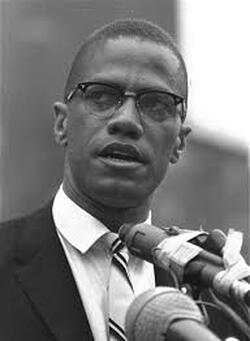
The Two Hands of the State: Both Deadly
“The basic reason why the plague cannot be stopped by the, drug prevention and rehabilitation programs is that these programs, with their archaic, bourgeois Freudian approach and their unrealistic therapeutic communities, do not deal with the causes of the problem. These programs deliberately negate or at best deal flippantly with the socio-economic origin of drug addiction. These programs sanctimoniously deny the fact that capitalist exploitation and racial oppression are the main contributing factors to drug addiction in regard to Black people. These programs were never intended to cure Black addicts. They can’t even cure the white addicts they were designed for.”[10]
The state first crushed the liberation movement —dismantling the programs led by revolutionary organizations—and then set up a network of tunnel-vision, pity-the-poor, charity non-profits. Just in 1969, the FBI and COINTELPRO assassinated 26 leaders of the Black Liberation Movement and jailed hundreds of others on trumped up charges, including Cetewayo and 20 other New York City based Panthers. The state took the initiative to behead the movement so that the community would continue to burn. Do-gooder outsiders, usually white, were subsequently paraded in to replace the authentic, grass-roots leadership that had undertaken community healing as part of the social struggle.[11]
Limits of the Social Work Model
An underfunded social work agency is the cheap substitute for a self-determining community, the crumbs the system arrogantly tosses the disenfranchised. Instead of fostering a positive, redemptive, collective self-esteem, social work agencies push individualized solutions. This may include therapy and benefit access, and medications like Methadone and Suboxone. These interventions can be effective in some cases, but they are detached from the overarching cause of broad societal healing. When they are detached from genuine resistance, they are band aids that are placed over hemorrhages, often substituting one addiction with another.
This article should not be read as an attack on the individual social service workers, who, most often, are hard-working, compassionate people. This is a challenge to them as well, to begin, or in some cases continue, to question what social class they serve. Can they cease to be cogs in a machine that churns out stagnancy and disempowerment and align themselves with the liberation movement?[13]
The everyday social workers’ test is achieving balance between a job to survive and the revolutionary work that they believe in. Social work agencies (their job) consume their employees nearly entirely, leaving them few hours to step outside of their routine and to do the real, liberation work that needs to be done. By doing so, the non-profit sector benefits from the organizing talent of a particular segment of socially conscious college graduates. The potential freedom fighters are often bogged down and burnt out before they are able to find a revolutionary expression of their desire to help the oppressed.
Narcotics Anonymous
The strength of NA is that it is available to everyone. In contrast to the massive “recovery” industry in which people are shuttled off into 30, 60, 90 day or longer “spin dry” programs, to the tune of tens of thousands of dollars, NA, like a revolutionary organization, does not discriminate against or reject anyone. Many “rehab” programs are inaccessible because of how expensive they are.
The 10th tradition of NA states: “10. Narcotics Anonymous has no opinion on outside issues; hence the NA name ought never be drawn into public controversy.” This tradition was originated by Alcoholics Anonymous, NA’s predecessor. The original AA “long version” of the tradition sheds more light on its intention:
“No A.A. group or member should ever, in such a way as to implicate A.A., express any opinion on outside controversial issues—particularly those of politics, alcohol reform, or sectarian religion. The Alcoholics Anonymous groups oppose no one. Concerning such matters they can express no views whatever.”
The gut instinct, to distrust politics, makes sense from the perspective of populations hoodwinked every four years by politicians, who make empty promises in exchange for votes. But the vast majority of addicts are members of the working class, facing the same issues of exploitation or unemployment, racism, sexism and anti-LGBTQ bigotry as the rest of our class. In early recovery, addicts correctly focus on getting clean and staying clean, and this may take all their energy beyond basic survival. But with the help of NA and other recovery groups, many are able to enjoy the gift of long-term abstinence from drugs. At this stage of recovery, it makes sense to take an objective look at the world and try to understand it. Just as in NA addicts learn that “together we can do what we could never do alone,” so in the larger society, recovering addicts can learn that “the people united will never be defeated.”
This process is already beginning, as some people in the recovery community have formed a network called “New Recovery” that brings together community-based organizations made up of people overcoming addiction and their families. New Recovery focuses on community education and political advocacy around issues of importance to the recovery community—for instance, insurance parity for mental health and addiction treatment, restoration of voting rights for felons convicted of drug crimes, alternatives to prison as an approach to the problem of addiction, and so on.
Already, we know revolutionaries, union organizers, union members and conscious workers who are seeking or have achieved long-term recovery in NA and AA. How can revolutionary organizations organically win these survivors and fighters over to the broader fight?
The Mightiest ‘Higher Power’
Revolutionary socialists also believe in a higher power. And that power is the power of the people, millions of people—conscious, active, united and mobilized—in pursuit of emancipation. There are countless examples of the power of masses of people to directly intervene in and transform history, such as the Haitian Revolution, the Great Depression-era union struggles for Social Security and other benefits, the Chinese Revolution, the Civil Rights movement and the Vietnamese defense of their homeland and defeat of U.S. imperialism, from 1962-1975. As is said in NA, “Together we can do what we could never do alone.” This is true for freeing people from the chains of active addiction, and it is true for the processes that liberate people from political and social oppression.
The oppressors do not voluntarily give up anything. The oppressed, out of necessity, must seize what we deserve. It is an individual’s right to believe in divine intervention in the affairs of society, but it is our duty to understand and then challenge that which is unjust in the world in front of us. People who work a strong program of recovery have the potential to become powerful organizers because they are principled people. Tradition 12 states: “always remember to place principles above personalities.” Our work then in the present should be to form working relationships with groups of individuals involved in the 12-step programs and highlight our common interest in overthrowing the social conditions that magnify the incidence of addiction and early death under capitalism.
Cough it up, then Rise Up
| It is a powerful step for someone to admit they are a survivor of sexual violence but the deeper question is: why is there a trans-generational culture of sexual abuse and rape? Returning veterans, who have lived through war and have PTSD, deserve and need group therapy. The far-reaching question though, is why are hundreds of thousands of teenagers and young men and women sent off thousands of miles away to persecute wars of foreign conquest, sustaining life-debilitating injuries, trauma and death in the process? And in the richest country in the world, why does brutal poverty and a hollow educational order deprive masses of people of a sense of purpose? Four million people in the United States survive on less than $2 a day, and the vast majority of them are children.[15] |
Like membership in NA, being a Panther or Young Lord was not a one-hour commitment, once or twice a week. It was a lifestyle. This righteous, inspired lifestyle transformed people. The uplifting of communities necessarily touched masses of people.
Oppressed and exploited communities need leadership, organization and centralism. It is only the mighty centralism of the oppressed that can defeat the centralism of the oppressor (the police, the army). It is only through this fight-back movement, that we can forge our liberation.
Another World is Necessary
Beattyville, KY, the Bronx, NY, Brockton, MA, Watts, Los Angeles, and every oppressed community in between writhes under the same system. Only a new system, based on a new set of principles, can begin to alleviate our suffering on a mass level. To embrace this historical challenge, arguably the most daunting any people has ever faced, is to bring into motion our people who have fallen by the wayside by the hundreds and thousands. We all have a role to play —no matter how great or small— in this struggle.
(The author dedicates this article to his cousin Ben (27) and his sister Ellen (46), both of whom died of heroin overdoses. No life was lived in vain if it inspires others to nurture and protect the lives of future generations.)
Endnotes
[1] Statistics according to that Census Bureau 2008-12 survey, cited in The Guardian’s November 12th report.
[2] Influenced by the Panthers, Angela Davis published Women, Race and Class in 1981, highlighting how poor Black women are triply oppressed by white supremacy, patriarchy and the class system. This is a good starting point for readers who want to read more on this subject.
[3] The authorities called in the NYPD to restore business as usual. It was only the outpouring of community support that prevented the NYPD from inflicting abuse and legal reprisals at the hands of the state.
[4] This clinic remained open until the next mayoral administration of Abraham Beame pulled funding from the project, resulting in a surge in untreated addiction in the area. In recent years, the cost of life saving medications needed to treat hepatitis C, cancer, cholesterol and other illnesses, rose more than 500 percent, creating wider gaps in an already unequal healthcare system. (“Drug Goes From $13.50 a Tablet to $750, Overnight.” New York Times. Andrew Pollack. Sept. 20, 2015.) Only a new system, which prioritizes people’s needs over profits, can we make health care available to all poor and working people. It serves us to remember this militant example of resistance today, as heroin and other health care epidemics continue to ravage the very communities where Lincoln Hospital is located in the South Bronx.
[5] Live Science defines addiction as a brain disorder in which the circuitry of the brain demands “rewards,” in the form of alcohol or drugs. Addiction now Defined as Brain Problem, not Behavioral Problem. Live Science. August 15th, 2011. Socioeconomic Status and Substance Use among Young Adults: A Comparison across Constructs and Drugs. Journal of Studies of Drugs and Alcohol. September 2012. “Among Delinquent Youth, whites more likely to abuse hard drugs vs Black or Hispanics.” Russia Today. March 18, 2016. “Study: Whites more likely to Abuse Drugs than Blacks.” Heathland Time. Nov., 7, 2011.
[6]From an interview in “Black and Gold” documentary film. Directed by Richard Rowley and Jacqui Soohen. 1999.
[7] Aime Cesaire, Les Armes Miraculeuses (And the Dogs were Quiet, Et les chiens se taisaient), pp. 133—37.
[8] Dead Prez’s song and video “I Believe” brilliantly synthesizes the thesis of this article through hip hop.
[9] From Malcolm X’s speech “This System can’t Produce Freedom,” March 29, 1964.
[10] “Capitalism Plus Dope Equals Genocide,” by Michael “Cetewayo” Tabor, n.d. 1968.
[11] This is precisely what happened in Haiti in the wake of the earthquake in 2012. Today “Third World countries” –read Oppressed Nations— have a higher rate of charity workers than ever, yet are further mired in impoverishment. This is by design. NGO’s are the internationalization of non-profit tactic of community dis-empowerment.
[12] Fred Hampton
[13] The book The Revolution will not be Funded is a good resource to understand the everyday role of the Non-Profit Industrial Complex in stamping out resistance.
[14] Cited in Chasing the Scream: The First and Last Days of the War on Drugs, by Johann Hari.
[15] Kathryn Edin and H. Luke Shaefer. $2 a day: Living on Almost Nothing in America.
Author
Danny Shaw Latin American and Caribbean Studies Professor at CUNY. International Affairs analyst at TeleSURtv, RT_com, HispanTV, and PressTV. Author: The Saints of Santo Domingo.
Archives
July 2023
June 2023
May 2023
April 2023
March 2023
February 2023
January 2023
December 2022
November 2022
October 2022
September 2022
August 2022
July 2022
June 2022
May 2022
April 2022
March 2022
February 2022
January 2022
December 2021
November 2021
October 2021
September 2021
August 2021
July 2021
June 2021
May 2021
April 2021
March 2021
February 2021
January 2021
December 2020
November 2020
October 2020
September 2020
August 2020
July 2020
7/9/2023
Addressing allegations of “Chinese spy base” in Cuba.By: Manolo De Los Santos & Kate Gonzales
Read NowMeanwhile, Cuban officials held a press conference on June 8 to completely deny the allegations. Cuba’s Vice Foreign Minister Carlos de Cossío stated that “All these are fallacies promoted with the deceitful intention of justifying the unprecedented tightening of the blockade, destabilization, and aggression against Cuba and of deceiving public opinion in the United States and the world.” Even John Kirby, National Security Council spokesman who was the former press secretary for the Pentagon, has denied the WSJ report, calling it “inaccurate.”
This is just one new addition to the long legacy of lies that the United States has been spinning in an attempt to further alienate the Cuban people. One just has to remember the “Havana syndrome” that mysteriously affected diplomats in Cuba; it was first blamed on foreign powers as an attack but was later revealed to have no basis. Or maybe the claims about 20,000 Cuban soldiers supposedly based in Venezuela to maintain the government there, when in reality, the vast majority of Cubans present in Venezuela were medical workers. Or perhaps the idea that Cuban doctors sent across the world are enslaved, when it is simply their understanding that their duty to humanity is to provide health care to those who need it. All of these lies have been told just in the past few years alone.
These falsified stories all swirl into fomenting the atmosphere of paranoia and suspicion that prevents normal U.S.-Cuba relations. In the wake of the Havana syndrome myth, Trump was able to interrupt the path Obama set toward normalization, setting 243 additional and comprehensive sanctions, and further preventing the island from meeting its basic needs. The United States continues to live out its Cold War fantasies through these lies, at the cost of the Cuban people’s lives and well-being.
And yet, it maintains its hypocrisy. Cossío was careful to point out that Cuba would never allow a foreign military base on their island, as it is a signatory of the Declaration of Latin America and the Caribbean as a Zone of Peace. Cuba is also currently sponsoring and hosting peace talks between Colombia and the National Liberation Army (ELN). As of today, they have agreed to a cease-fire, ending decades of violence in the country. Cuba already suffers from the illegal U.S. occupation of Guantanamo, to further rub salt in the wound. The United States has its infamous military base there, which is known for the inhumane treatment and torture it deals out to its prisoners. While it accuses China of military expansion, the United States has hundreds of military bases all over the globe.
Cuba has demonstrated that it desires nothing but peace in the region, and normal relations with its neighbor, the United States. But the United States refuses to accept this proposal. Instead, it maintains the most comprehensive sanctions in history against the small island. Instead, it falsely places Cuba on the state sponsors of terrorism list, even though it is in fact a sponsor of peace. Instead, the U.S. government and its media apparatuses choose to fabricate myths and legends, painting Cuba as the evil monster under the bed. It chooses to scare the U.S. people away from the possibility that normal relations and ending the blockade against Cuba could be good for people from both countries.
Author
Manolo De Los Santos is the co-executive director of the People’s Forum and is a researcher at Tricontinental: Institute for Social Research. He co-edited, most recently, Viviremos: Venezuela vs. Hybrid War (LeftWord Books/1804 Books, 2020) and Comrade of the Revolution: Selected Speeches of Fidel Castro (LeftWord Books/1804 Books, 2021). He is a co-coordinator of the People’s Summit for Democracy.
Kate Gonzales is the editorial coordinator at 1804 Books. Born and raised in New York City, she has worked in development and education for arts and political organizations, and organized with grassroots movements in Hungary and New Jersey. Kate studied anthropology at Bard College, where she wrote her thesis on Filipino migrant nationalism.
Archives
July 2023
June 2023
May 2023
April 2023
March 2023
February 2023
January 2023
December 2022
November 2022
October 2022
September 2022
August 2022
July 2022
June 2022
May 2022
April 2022
March 2022
February 2022
January 2022
December 2021
November 2021
October 2021
September 2021
August 2021
July 2021
June 2021
May 2021
April 2021
March 2021
February 2021
January 2021
December 2020
November 2020
October 2020
September 2020
August 2020
July 2020
It is racing ahead too in diplomacy and trade: it has now replaced the US as the country with the most diplomatic missions overseas, and is the biggest trading partner of a majority of countries globally.
This very success — China’s status as the United States’ only acknowledged “peer competitor”— could be the reason China is now routinely depicted as a menace.
Britain’s BBC dutifully takes up scares over weather balloons and breathless reports on Chinese aircraft or ships’ “aggressive” conduct in encounters with US counterparts — which for some reason always take place just off the Chinese, not the American coast.
Projects like the Belt & Road Initiative, which overtook the World Bank as the biggest development finance lender in 2019, are seen as evidence of a sinister new imperialism.
Understanding China could hardly be more important for today’s left.
The “China threat” is a key justification for a major plank of British state policy: huge increases in arms spending and the first “east of Suez” military deployments in many decades.
This could mean World War III: a serving US general predicts that happening the year after next.
Armageddon could result from current China policy in other ways: sanctions and economic “decoupling” are cutting us off from the world leader in renewable technology and undermining scientific co-operation on global warming or pandemics.
Socialists need to know how we respond to these challenges. Carlos Martinez’s new book The East is Still Red is an excellent guide.
Whether China is socialist, as its ruling Communist Party argues, is a divisive topic but with an eye on history Martinez draws out the consistencies in the country’s course since 1949.
Chapter 1, No Great Wall, looks at how the “reform and opening up” period begun by Deng Xiaoping from 1978 built on achievements of the Mao years, without underrating the huge policy differences that did occur, or whitewashing either era. Later, in Will China Suffer the Same Fate as the Soviet Union, Martinez contrasts the two and points both to underlying strengths in China’s model and the lessons its party leadership has learned from the Soviet collapse.
Many are familiar with impressive headline figures such as China lifting 800 million people out of poverty — but Western accounts tend to imply this is the undirected result of introducing “the market,” though capitalist market economies such as India or Brazil cannot point to similar achievements. Martinez delves into the details and looks at the targets, the plans, the actual measures taken to deliver the greatest improvement in human welfare in recorded history.
For a Western left audience, key chapters are those on how China is making progress towards “ecological civilisation” — and why a “plague on both your houses” position dubbed Neither Washington Nor Beijing is untenable in a context where the US is unambiguously the aggressor in the new cold war while China’s rise is widely welcomed in the global South.
Later, he adopts Noam Chomsky’s famous phrase “manufacturing consent” while looking at the media’s coverage of China and how issues are distorted to build support for our own ruling class’s hostility to it: essential reading here is a demolition of the wild claims made about alleged abuses in Xinjiang and their less than objective origins.
Developed from articles written on different aspects of China and its revolution — many originally published in the Morning Star — this is a highly readable narrative that doesn’t presuppose detailed knowledge of Chinese history or politics.
The thematic character means many chapters work well on their own, and will make it a handy reference point for anyone wanting to brush up on specifics like the anti-poverty campaigns or China and climate change. It’s extensively referenced, and welcome in quoting more Chinese than foreign sources on the country.
Highly recommended.
Author
Morning Star
Archives
July 2023
June 2023
May 2023
April 2023
March 2023
February 2023
January 2023
December 2022
November 2022
October 2022
September 2022
August 2022
July 2022
June 2022
May 2022
April 2022
March 2022
February 2022
January 2022
December 2021
November 2021
October 2021
September 2021
August 2021
July 2021
June 2021
May 2021
April 2021
March 2021
February 2021
January 2021
December 2020
November 2020
October 2020
September 2020
August 2020
July 2020
Although US intelligence (throughout the 1950s) provided the Eisenhower administration with a thorough history delineating the dangers of instability looming throughout the island, commanded by then military despot and “strong-man” Fulgencio Batista (who seized his return to power in an army-coup in 1952), the US foolishly continued to provide economic, logistical and materiel support to the unpopular and graft-driven dictatorship. US intelligence understood the potential danger posed by “[this] young reformist leader” Fidel Castro and his band of revolutionaries. Castro and the 26th of July movement were a defiant response to what they considered a foreign controlled reactionary government. This response stood as a direct threat to the natural order of things, i.e., the US’s historic prohibition (beyond legalistic euphemisms and platitudes) of any genuine vestige of national sovereignty and self-determination by the Cuban people - which undergirded a belief that, like most Latin American states, the Cuban people were innately “child-like,” incapable of true self-governance. Beyond that, after the ousting of Batista, and “flush with victory,” a young Fidel Castro, on January 2, 1959 (in Santiago de Cuba), assertively threw down the gauntlet, “this time, fortunately for Cuba, the revolution will not be thwarted. It won’t be as in 1895, when the Americans came in at the last hour ‘and made themselves masters of the country.’” Hence, as Jeffery J. Safford makes evident, this existential risk, in the minds of US policymakers, would have to be dealt with, embraced, evaluated, and analyzed (at least initially) in order to maintain the desired outcome – i.e., evading Communist influence and maintaining economic “stability” through the protection of US interests on the island of Cuba no matter the cost.
In March of 1960, while naively underestimating Castro’s success and support on the island, “the Eisenhower administration secretly made a formal decision to re-conquer Cuba … with a proviso: it had to be done in such a way that the US hand would not be evident.” Ultimately, US policymakers wanted to avoid a broader “backlash of instability” throughout the hemisphere by overtly invading the small island nation. That said, Castro and his revolutionaries understood the stark realities and nefarious possibilities cast over them, given the US’s history of flagrant regime change throughout the region. Castro’s accusations as presented at the United Nations, on 26 September 1960, which declared that US leaders were (intending if not) preparing to invade Cuba, were dismissed by the New York Times as “shrill with … anti-American propaganda.” Furthermore, Castro was ridiculed, by US representative James J. Wadsworth, as having “Alice in Wonderland fantasies” of an invasion. But Castro’s committed revolutionary coterie knew better, “In Guatemala in 1954 [Ernesto ‘Che’ Guevara witnessed] the first U.S. Cold War intervention [in the region] as U.S.-trained and backed counter-revolutionary forces overthrew the democratically elected government of Jacobo Arbenz…” In fact, similarly, the imminent Central Intelligence Agency (CIA) orchestrated assault, known as the Bay of Pigs (BOPs) invasion, under the Kennedy administration in April 1961, was heavily reliant upon anti-revolutionary factions, the Cuban people, and the military, rising up to join the invaders – which as history proves, and journalist/author David Talbot underscores, did not come to pass:
To avoid Arbenz’s fate, Castro and Guevara would do everything he had not: put the hard-cored thugs of the old regime up against a wall, run the CIA’s agents out of the country, purge the armed forces, and mobilize the Cuban people … Fidel and Che became an audacious threat to the American empire. They represented the most dangerous revolutionary idea of all – the one that refused to be crushed.
This became an epic ideological battle in the myopic mind of US officials: the possible proliferation of an assortment of “despotic” Communist controlled fiefdoms vs. the-free-world! Indeed, Arthur Schlesinger, Jr., special aide and historian to President John F. Kennedy in 1961-63, ominously warned the Executive, that “the spread of the Castro idea of taking matters into one’s own hands,” had great appeal in Cuba (and throughout Latin America), i.e., everywhere that, “distribution of land and other forms of national wealth greatly favor[ed] the propertied classes … [thus] the poor and underprivileged, stimulated by the example of the Cuban revolution, [were] now demanding opportunities for a decent living.” This was the urgent and fundamental threat (or challenge) Fidel Castro and his movement posed to US hemispheric rule.
US media focused heavily on the plight of the “majority middleclass” Cuban exiles, that chose to leave the island as a result of the revolution’s redistributive polices. Cubans, particularly the initial waves, were dispossessed of substantial wealth and position and often arrived Stateside in chiefly worse conditions. But the essential question as to, “why the [majority of] Cuban people [stood] by the Castro ‘dictatorship’?,” as Michael Parenti contends, was ignored by public officials and the press alike:
Not a word appeared in the U.S. press about the advances made by ordinary Cubans under the Revolution, the millions who for the first time had access to education, literacy, medical care, decent housing [and] jobs … offering a better life than the free-market misery endured under the U.S.-Batista ancient régime.
Castro’s revolutionary ideals based on José Martí’s patriotic theme of national sovereignty and self-determination, effectively armed the Cuban people through a stratagem of socialist ideology and wealth redistribution meshed in a formula of land reform and social services (i.e., education, healthcare, jobs and housing) which included the nationalization of foreign owned businesses; as such, US policymakers believed, “His continued presence within the hemispheric community as a dangerously effective exponent of ‘Communism’ and Anti-Americanism constitutes a real menace capable of eventually overthrowing the elected governments in any one or more ‘weak’ Latin American republics.” Fidel Castro was thus wantonly placed within the crosshairs of US covert-action.
American officials assumed that the elimination of Castro was central to the suppression of his socialist principles, as Alan McPherson demonstrates, “In fall 1961, after the [BOPs] disaster, [JFK] gave the order to resume covert plans to get rid of Castro, if not explicitly to assassinate him.” Earlier in 1960, then CIA director, Allen Dulles’ hardline that Castro was a devoted Communist and threat to US security “mirrored [those] of the business world such as, William Pawley, the globetrotting millionaire entrepreneur whose major investments in Cuban sugar plantations and Havana’s municipal transportation system were wiped out by Castro’s revolution.” Thus, US officials, the Security State and US business-interests were unified, “After Fidel rode into Havana on a tank in January 1959, Pawley [a capitalist scion] who was gripped by what Eisenhower called a ‘pathological hatred for Castro,’ even volunteered to pay for his assassination.” Countless attempts followed, thus, killing Castro became vital to the idea of US hemispheric “stability,” i.e., capitalist economic and ideological control; and as such, Intelligence Services believed, “[The] political vulnerability of the regime lies in the person of Castro himself…” Hence, the purging of Fidel Castro and the cessation of his ideas, through the punishment of the Cuban people, became not only the strategy of choice for the US, but its incessant authoritative doctrine. Accordingly, as longtime US diplomat to Cuba, Wayne Smith verifies, the US’s two overarching obsessive qualms which it believed required the eradication of Fidel Castro were: the long-term influence of his revolutionary socialist ideals in Latin America and beyond; and, the possible establishment of a successful Communist state on the island which would diminish US security, stature, image, influence and prestige in the hemisphere; and, in the eyes of the world.
Through 1960-64, Castro had good reason to be on guard, “…the fact that the Kennedy administration was acutely embarrassed by the unmitigated defeat [at the BOPs] -indeed because of it- a campaign of smaller-scale attacks upon Cuba was initiated almost immediately.” Then Attorney General Robert F. Kennedy stated unequivocally, as Schlesinger reveals, that his goal, “was to bring the terrors of the Earth to Cuba.” RFK went on to emphasize the point that the eradication of the Castro “regime” was the US’s central policy concern, “He informed the CIA that the Cuban problem carries, ‘…top priority in the United States Government -all else is secondary- no time, no effort, or manpower is to be spared.’” Beyond the multifaceted covert actions directed at Cuba under Operation Mongoose, RFK and the US Joint Chiefs of Staff, aided by the CIA et al., implemented a long-term multi-pronged plan of punishment, focused on Cuba through Latin America, which included disinformation campaigns, subversion and sabotage (they called hemispheric-defense-policies) that comprised a Military Assistance Program (MAP), which included economic support, subversive tactical training and materiel, devised to terminate “the threat” (i.e., Castro and his ideas) by establishing an Inter-American-Security-Force (of obedient states) under US control.
With Cuba now in the crosshairs, in the early 1960s, “the CIA … played savior to the [anti-Castro] émigrés, building a massive training station in Miami, known as JMWave, that became the agency’s second largest after Langley, Virginia. In fact, it coordinated the training of what became known as the disastrous landing … in 1961.” Conversely, historian Daniel A. Sjursen focuses more on JFK (than the CIA) as the culprit behind the heightened tensions amongst the three principal players. By 1962, with Cuba in the middle, both superpowers (the US and the USSR) stood at a standstill amid the very real possibility of a global conflagration which, Sjursen states, was primarily due to US bravado on behalf of a “military obsessed” young President, “In preparing for a May 1961 summit meeting with Khrushchev [Kennedy stated] ‘I’ll have to show him that we can be as though as he is….’” Sjursen argues, “This flawed and simplistic thinking grounded just about every Kennedy decision in world affairs from 1961 to 1963 … and would eventually bring the world to the brink of destruction with the Cuban Missile Crisis; and, suck the US military into a disastrous unwinnable war in Vietnam.” And yet, as Smith contends, Kennedy was certainly not without bravado, but ultimately, did make attempts to “defuse” the situation. Kennedy, Smith discloses, ruffled-feathers within the Security State by, 1) his desire to end the Cold War, 2) his starting of a rapprochement with Castro (who was desirous of such - even if indirectly) and, 3) his goal to pull-out of Vietnam. In fact, with the Kennedy-Khrushchev negotiations finalized by JFK’s promise not to invade Cuba if Soviet warheads were removed from the island – Khrushchev acquiesced, to Castro’s dismay, but tensions did diminish.
Be that as it may, Philip Brenner maintains, the crisis did not go-away on 28 October 1962 for either the US or the USSR. The Kennedy-Khrushchev arrangements had to be implemented. On 20 November, the US Strategic Air Command was still on high alert: full readiness for war - with the naval quarantine (i.e., blockade) firmly in place. As a result, Castro stayed open to negotiations with the US, but at the same time purposefully cautious. “At this point Castro, like Kennedy and Khrushchev, was circumventing his own more bellicose government in order to dialog with the enemy. Castro, too, was struggling, [but willing,] to transcend his Cold War ideology for the sake of peace. Like Kennedy and Khrushchev both, [he knew,] he had to walk softly.” Nevertheless, Castro stressed the fact that the Soviet Union had no right to negotiate with the US per inspections or the return of the bombers, “Instead, he announced, Cuba would be willing to comply based on [specific] demands: that the United States end the economic embargo; stop subversive activities … cease violations of Cuban airspace; and, return Guantanamo Naval Base.” Of course, the United States security apparatus was arrogantly steadfast in its refusal to agree or even negotiate the matter.
In spite of that, a rapprochement (devised by Kennedy diplomat, William Attwood, and, Castro representative to the UN Carlos Lechuga) was surreptitiously endeavored through a liaison, journalist Jean Daniel of the New Republic, who stated that, Kennedy, retrospectively, criticized the pro-Batista policies of the fifties for “economic colonization, humiliation and exploitation” of the island and added that, “we shall have to pay for those sins….” Which may be considered one of the most brazenly honest statements, regarding the island, on behalf of an American President, in the long and complex history of US/Cuban relations. Daniel then wrote, “I could see plainly that John Kennedy had doubts [about the government’s policies toward Cuba] and was seeking a way out.” In spite of JFK’s pugnacious rhetoric directed at Cuba, during his 1960 Presidential campaign, Castro remained open and accommodating, he understood the forces arrayed upon the President, in fact, he saw Kennedy’s position as an unenviable one:
I don’t think a President of the United States is ever really free … and I also believe he now understands the extent to which he has been misled. …I know that for Khrushchev, Kennedy is a man you can talk with....
While in the middle of (an Attwood arranged and Kennedy sanctioned) clandestine meeting with Castro, Daniel reported, that (at 2pm Cuban-time) the news arrived that JFK was dead (shot in Dallas, Texas, on that very same day, 22 November 1963, at 12:30pm), “Castro stood-up , looked at me [dismayed], and said ‘Everything is going to change,…’” and he was spot-on. Consequently, with (newly sworn-in) President Lyndon Baines Johnson mindful of the fact that Lee Harvey Oswald was “proclaimed” a Castro devotee, accommodations with the Cuban government would be much more difficult. As such, the Attwood-Lechuga connection was terminated. Julian Borger, journalist for the Guardian, maintains that “Castro saw Kennedy’s killing as a setback, [he] tried to restart a dialogue with the next administration, but LBJ was … too concerned [with] appearing soft on communism,” meaning opinion polls, and their consequences, trumped keeping channels of communication open with the Cuban government. Which obliquely implies the notion that relations with Cuba might have been different if JFK had not been murdered.
With the Johnson administration bogged down in an “unwinnable war” in Southeast Asia and Civil Rights battles occurring on the streets of the US, Cuba and its revolution began to fall off the radar. By 1964, the Johnson administration, concerned with public opinion, as mentioned, took swift and immediate action to stop the deliberate terror perpetrated on the Cuban people. LBJ, in April of that year, called for a cessation of sabotage attacks. Johnson openly admitted, “we had been operating a damned Murder, Inc., in the Caribbean.’” Nonetheless, the national security apparatus (i.e., the CIA, the Joint-Chiefs and military intelligence) along with US policymakers (and US based exile groups), remained obstinate, steadfast and consistent in their goal – to punish (if not kill) Fidel Castro and his revolution, by maintaining a punitive program of economic strangulation with the hopes that Castro would be, not only isolated on the world stage, but condemned by his own people who would rise up and eradicate the man and his socialist regime – which did not occur. Of course, the termination of hostilities directive ordered by Johnson did not include economic enmity - which persisted throughout the 1960s and beyond. In fact, a CIA field-agent appointed to anti-Castro operations detailed the agency’s sadistic objectives as expressed through author John Marks, by explaining:
“Agency officials reasoned, … that it would be easier to overthrow Castro if Cubans could be made unhappy with their standard of living. ‘We wanted to keep bread out of the stores so people were hungry … We wanted to keep rationing in effect….’”
The purpose of the economic blockade remained fixed from the early 60s onward: to contain, defame, discredit and destroy Castro and his experimentation with, what the US considered, subversive Communist ideals.
Finally, the US’s belligerent, if not insidious, hardline-stance toward this small island nation reignited at the end of the 1960s, which included not only an economic strangle-hold, but full-blown underground sabotage operations. The 37th president of the United States, Richard M. “Nixon’s first acts in office in 1969 was to direct the CIA to intensify its covert [Hybrid War] operations against Cuba.” Nixon and his then National Security Advisor, Henry Kissinger, still believed, callously, that military aggression, violence, brutality and intimidation (coalesced by vicious economic sanctions) were the answers to America’s woes abroad. US policy toward Cuba for more than sixty-years is reminiscent of a famous quote often attributed to Albert Einstein: “Insanity is doing the same thing over and over again, but expecting a different result.” Hence, Castro’s Cuba (not only America’s nemesis, but also the model of an uncompromising US global order) was the consequence of an even longer and persistent imperial US foreign policy: If the United States had not impeded Cuba’s push for national sovereignty and self-determination in the initial part of the 20th century; if it had not sustained a sequence of tyrannical despots on the island; and, if it had not been complicit in the termination and manipulation of the 1952 election, an ineradicable character such as the young reformist, and socialist, Fidel Castro may never have materialized. Ultimately, the headstrong US stratagem of assassination and suffocation of Castro and his socialist revolution failed, not only by bolstering his image on the island, but abroad as well. Ironically, the US helped to create its own oppositional exemplar of resistance, in the image of Fidel Castro, Che Guevara and the Cuban people, i.e., the revolution - two men and a small island nation that stood up defiantly to the US led global-capitalist-order and would not relent. The US feared the Revolution of 1959’s challenge to class-power, colonialization; and, its popularity with the multitudes - thus, it had to be forcefully restricted through malicious policies of trade-embargoes, threats of violence and ideological-isolation. In fact, the Cuban rebellion courageously and tenaciously stood up to, and resisted, specific contrivances (or designs) by which the US had customarily, boastfully and self-admiringly delineated its dominant status through the forceful protection of its exploitative-business-practices (aka, the “Yankee boot”) on the backs of the Cuban people, for which, Fidel Castro and his bottom-up-populist-crusade were held ominously, insidiously and interminably responsible….
2. William R. Manning, Diplomatic Correspondence of the United States: Inter-American Affairs, 1831-1860 (Washington, 1932), 70.
2. Ibid.
3. Albert J. Beveridge, “Cuba and Congress,” The North American Review 172, no. 533 (1901): 536.
4. The Platt Amendment, May 22, 1903.
5. Pérez, “Meanings and Memories,” 513.
6. Allen Dulles, Political Stability In Central America and The Caribbean Through 1958 (CIA: FOIA Reading Room, April 23, 1957), 4–5.
7. Ibid., 4.
8.Fidel Castro, “History Will Absolve Me,” 1953.
9. The Platt Amendment.
10. Lars Schoultz, That Infernal Little Cuban Republic: The United States and the Cuban Revolution (Chapel Hill, 2009), 58.
11. Pérez, “Meanings and Memories,” 514.
12. Jeffrey J. Safford, “The Nixon-Castro Meeting of 19 April 1959,” Diplomatic History 4, no. 4 (1980): 425–431.
13. Noam Chomsky, Rogue States: The Rule of Force in World Affairs (London, 2000), 89.
14. “Cuba vs. U.S.,” New York Times (1923-), January 8, 1961, 1.
15. Ibid.
16. Aviva Chomsky, A History of the Cuban Revolution (Chichester, West Sussex, U.K. ; Malden, MA, 2011), 98.
17. “Official Inside Story Of the Cuba Invasion,” U.S. News & World Report, August 13, 1979.
18. David Talbot, The Devil’s Chessboard: Allen Dulles, the CIA, and the Rise of America’s Secret Government (New York, 2016), 338.
19. “7. Memorandum From the President’s Special Assistant (Schlesinger) to President Kennedy,” in 20. Foreign Relations of the United States, 1961-1963.
21. “15. Summary Guidelines Paper: United States Policy Toward Latin America,” in FRUS, 1961–1963.
22. “Cuba: The Breaking Point,” Time, January 13, 1961.
23. Maria de los Angeles Torres, In the Land of Mirrors: Cuban Exile Politics in the United States (Ann Arbor, 2001), 75.
24. Michael Parenti, “Aggression and Propaganda against Cuba,” in Superpower Principles U.S. Terrorism against Cuba, ed. Salim Lamrani (Monroe, Maine, 2005), 70.
25. Ibid.
26. Philip Buchen, Castro (National Archives: JFK Assassination Collection, 1975), 4–5.
27. Alan McPherson, “Cuba,” in A Companion to John F. Kennedy, ed. Marc J. Selverstone (Hoboken, 2014), 235.
28. Talbot, The Devil’s Chessboard, 340.
29. Ibid
30. Buchen, Castro, 7.
31. Wayne S. Smith, “Shackled to the Past: The United States and Cuba,” Current History 95 (1996).
32. William Blum, Killing Hope: US Military and CIA Interventions since World War II (London, 2014), 186.
33. Arthur M. Schlesinger Jr. quoted in Noam Chomsky and Marv Waterstone, Consequences of Capitalism: Manufacturing Discontent and Resistance (Chicago, 2021), 147.
34. Ibid.
35. The Joint Chiefs of Staff and Efforts to Contain Castro, 1960-64, April 1981, 3, Learn.
36. Alan McPherson, “Caribbean Taliban: Cuban American Terrorism in the 1970s,” Terrorism and Political Violence 31, no. 2 (March 4, 2019): 393.
37. Daniel A. Sjursen, A True History of the United States: Indigenous Genocide, Racialized Slavery, Hyper-Capitalism, Militarist Imperialism, and Other Overlooked Aspects of American Exceptionalism (Lebanon, New Hampshire, 2021), 479.
38. Ibid.
39. Hampshire College TV, 2015 • Eqbal Ahmad Lecture • Louis Perez • Wayne Smith • Hampshire College, 2016, accessed October 30, 2021, https://www.youtube.com/watch?v=IuBdKB8jX3I.
40. Philip Brenner, “Kennedy and Khrushchev on Cuba: Two Stages, Three Parties,” Problems of Communism 41, no. Special Issue (1992): 24–27.
41. Philip Brenner, “Cuba and the Missile Crisis,” Journal of Latin American Studies 22, no. 1 (1990): 133.
42. James W. Douglass, JFK and the Unspeakable: Why He Died and Why It Matters (New York, 2010), 84.
43. Brenner, “Cuba and the Missile Crisis,” 133.
44. “332. Letter From Acting Director of Central Intelligence Carter to the President’s Special Assistant for National Security Affairs (Bundy),” in FRUS, 1961–1963.
45. Jean Daniel, “Unofficial Envoy: An Historic Report from Two Capitals,” New Republic 149, no. 24 (December 14, 1963): 15–20.
46. Ibid.
47. Ibid.
48. Jean Daniel, “When Castro Heard the News,” New Republic 149, no. 23 (December 7, 1963): 7–9.
49. Ibid.
50. “378. Memorandum From Gordon Chase of the National Security Council Staff to the President’s Special Assistant for National Security Affairs (Bundy),” in FRUS, 1961–1963.
51. Julian Borger, “Revealed: How Kennedy’s Assassination Thwarted Hopes of Cuba Reconciliation,” Guardian, November 26, 2003.
52. Michael McClintock, Instruments of Statecraft: U.S. Guerilla Warfare, Counter-Insurgency, Counter-Terrorism, 1940-1990 (New York, 1992), 205.
53. John Marks, The Search for the Manchurian Candidate: The CIA and Mind Control (London, 1979), 198.
54. Raymond Garthoff, Detente and Confrontation: American-Soviet Relations from Nixon to Reagan (Washington, DC, 1985), 76n.
55. Stephen Kinzer, Overthrow: America’s Century of Regime Change from Hawaii to Iraq (New York, 2007), 91.
Author
Stephen Joseph Scott is an essayist associated with The University of Edinburgh, School of History; a singer/songwriter, humanist/activist – a self-taught musician, and performer. As a musician, he uses American Roots Music to illustrate the current American social and political landscape.
Archives
July 2023
June 2023
May 2023
April 2023
March 2023
February 2023
January 2023
December 2022
November 2022
October 2022
September 2022
August 2022
July 2022
June 2022
May 2022
April 2022
March 2022
February 2022
January 2022
December 2021
November 2021
October 2021
September 2021
August 2021
July 2021
June 2021
May 2021
April 2021
March 2021
February 2021
January 2021
December 2020
November 2020
October 2020
September 2020
August 2020
July 2020
7/5/2023
Pakistan arrests human trafficking suspects after migrant boat tragedy By: The Associated Press
Read NowPolice told The Associated Press that the ring was engaged in smuggling Pakistanis into Europe and that the arrests took place over the last two days, as part of a government crackdown on traffickers.
Thirty other suspects were arrested over the past few days in Pakistan and were being questioned for their role in facilitating smuggling activities.
Police continued raids across the country on Wednesday, in an attempt to arrest all involved in the migrant ship disaster. Pakistan's intelligence agencies are also helping local police in tracking smugglers who went underground.
The boat which capsized off the Greek coast — while carrying as many as 750 people — on June 14 is one of the worst migrant shipwrecks in the Mediterranean Sea. Only 104 men— Egyptians, Pakistanis, Syrians and Palestinians — survived and 82 bodies were recovered.
Pakistan PM convenes meeting
It was not immediately clear how many Pakistanis were on board the vessel and are still missing. So far, 150 relatives of Pakistanis believed to have been on the ship have given DNA samples for cross-referencing with the recovered bodies.
Officials in Athens said passengers refused help and insisted on proceeding to Italy, adding that it would have been too dangerous to try and evacuate hundreds of unwilling people from an overcrowded ship.
In sworn testimonies over the weekend, seen by the AP, survivors described shocking conditions on the five-day journey. Most of the passengers were denied food and water, and those who couldn't bribe the crew to get out of the hold were beaten if they tried to reach deck level.
Some Pakistani survivors also shared similar accounts with their families over the phone.
9 detained in Greece
The suspected smugglers, all from Egypt and aged between 20 and 40 years, appeared before a prosecutor on Tuesday to respond to charges that included manslaughter, setting up a criminal organization, migrant smuggling and causing a shipwreck.
In Brussels, the European Union decided to earmark 15 billion euros ($21.6 billion Cdn) as part of its 2024-2027 budget to address migration challenges.
The money would be used, among other things, to foster partnerships with third countries, provide help to refugees in the Middle East and react to humanitarian crises, EU Commission President Ursula von der Leyen said.
"It is horrible what happened and the more urgent it is that we act," von der Leyen said when asked about the shipwreck.
The latest incident comes as the International Organization for Migration's Missing Migrants Project reported last week that 2022 was the deadliest year for migrants in the Middle East and North Africa seeking to reach Europe since 2017. About 3,800 people died on sea and land migration routes within and from the Middle East-North Africa region, 11 per cent higher compared to 2021. In 2017, the project documented the deaths of 4,255 people in the region.
The first three months of 2023 were the deadliest first quarter since 2017, the same agency has reported, with 441 documented migrant deaths.
Author
The Associated Press
Archives
July 2023
June 2023
May 2023
April 2023
March 2023
February 2023
January 2023
December 2022
November 2022
October 2022
September 2022
August 2022
July 2022
June 2022
May 2022
April 2022
March 2022
February 2022
January 2022
December 2021
November 2021
October 2021
September 2021
August 2021
July 2021
June 2021
May 2021
April 2021
March 2021
February 2021
January 2021
December 2020
November 2020
October 2020
September 2020
August 2020
July 2020
7/5/2023
Bolivia Forges Lithium Extraction Partnerships with China and Russia By: Misión Verdad
Read NowA previous agreement worth a similar value had already been signed in January with the Chinese consortium CATL BRUNP & CMOC (CBC). Currently, there are four companies operating in the Bolivian salt flats, including the Bolivian state-owned Yacimientos de Litio Bolivianos (YLB) and three foreign companies. Nonetheless, President Luis Arce has affirmed that Bolivia’s lithium reserves are substantial enough to accommodate the establishment of numerous firms.
According to a report by El Periódico de la Energía, citing data from the Bolivian Ministry of Hydrocarbons and Energy, the process of selecting direct extraction technologies commenced in 2021 as part of an effort to expedite the industrialization of lithium. The initial milestone in this process was the signing of the agreement with the Chinese CBC.
Russia’s $600 million investment represents the first significant foreign venture in lithium production by the Russian state nuclear energy corporation Rosatom, with Uranium One Group being one of its members.
The project envisages the construction of two DLE processing plants in the towns of Pastos Grandes and Uyuni Norte, where at least 45,000 tons of lithium per year will be produced. The Bolivian government’s goal is to produce 100,000 tons of lithium carbonate yearly by 2025.
Consequently, China and Russia are emerging as leaders in the lithium race in Bolivia, home to the world’s largest reserves of the mineral. The United States considers both countries as threats to its interests in Latin America and the Caribbean due to their expanding diplomatic, commercial, and financial relations in Washington’s “backyard."
Author
Misión Verdad is a Venezuelan investigative journalism website with a socialist perspective in defense of the Bolivarian Revolution
Archives
June 2023
May 2023
April 2023
March 2023
February 2023
January 2023
December 2022
November 2022
October 2022
September 2022
August 2022
July 2022
June 2022
May 2022
April 2022
March 2022
February 2022
January 2022
December 2021
November 2021
October 2021
September 2021
August 2021
July 2021
June 2021
May 2021
April 2021
March 2021
February 2021
January 2021
December 2020
November 2020
October 2020
September 2020
August 2020
July 2020
Archives
July 2024
June 2024
May 2024
April 2024
March 2024
February 2024
January 2024
December 2023
November 2023
October 2023
September 2023
August 2023
July 2023
June 2023
May 2023
April 2023
March 2023
February 2023
January 2023
December 2022
November 2022
October 2022
September 2022
August 2022
July 2022
June 2022
May 2022
April 2022
March 2022
February 2022
January 2022
December 2021
November 2021
October 2021
September 2021
August 2021
July 2021
June 2021
May 2021
April 2021
March 2021
February 2021
January 2021
December 2020
November 2020
October 2020
September 2020
August 2020
July 2020
Categories
All
Aesthetics
Afghanistan
Althusser
American Civil War
American Socialism
American Socialism Travels
Anti Imperialism
Anti-Imperialism
Art
August Willich
Berlin Wall
Bolivia
Book Review
Brazil
Capitalism
Censorship
Chile
China
Chinese Philosophy Dialogue
Christianity
CIA
Class
Climate Change
COINTELPRO
Communism
Confucius
Cuba
Debunking Russiagate
Democracy
Democrats
DPRK
Eco Socialism
Ecuador
Egypt
Elections
Engels
Eurocommunism
Feminism
Frederick Douglass
Germany
Ghandi
Global Capitalism
Gramsci
History
Hunger
Immigration
Imperialism
Incarceration
Interview
Joe Biden
Labor
Labour
Lenin
Liberalism
Lincoln
Linke
Literature
Lula Da Silva
Malcolm X
Mao
Marx
Marxism
May Day
Media
Medicare For All
Mencius
Militarism
MKULTRA
Mozi
National Affairs
Nelson Mandela
Neoliberalism
New Left
News
Nina Turner
Novel
Palestine
Pandemic
Paris Commune
Pentagon
Peru Libre
Phillip-bonosky
Philosophy
Political-economy
Politics
Pol Pot
Proletarian
Putin
Race
Religion
Russia
Settlercolonialism
Slavery
Slavoj-zizek
Slavoj-zizek
Social-democracy
Socialism
South-africa
Soviet-union
Summer-2020-protests
Syria
Theory
The-weather-makers
Trump
Venezuela
War-on-drugs
Whatistobedone...now...likenow-now
Wilfrid-sellers
Worker-cooperatives
Xunzi
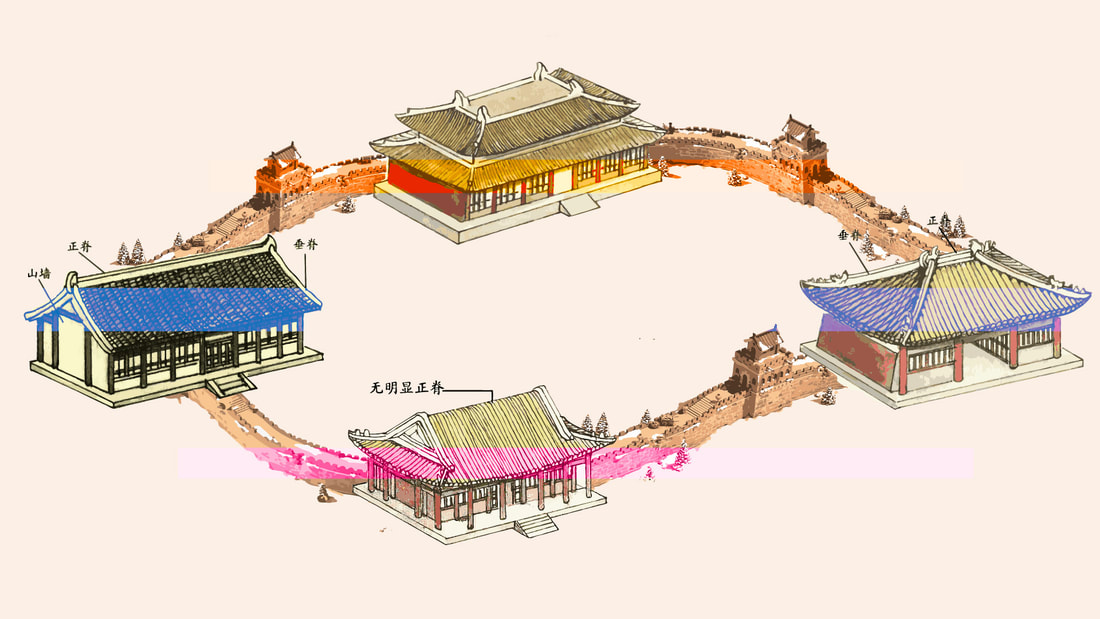
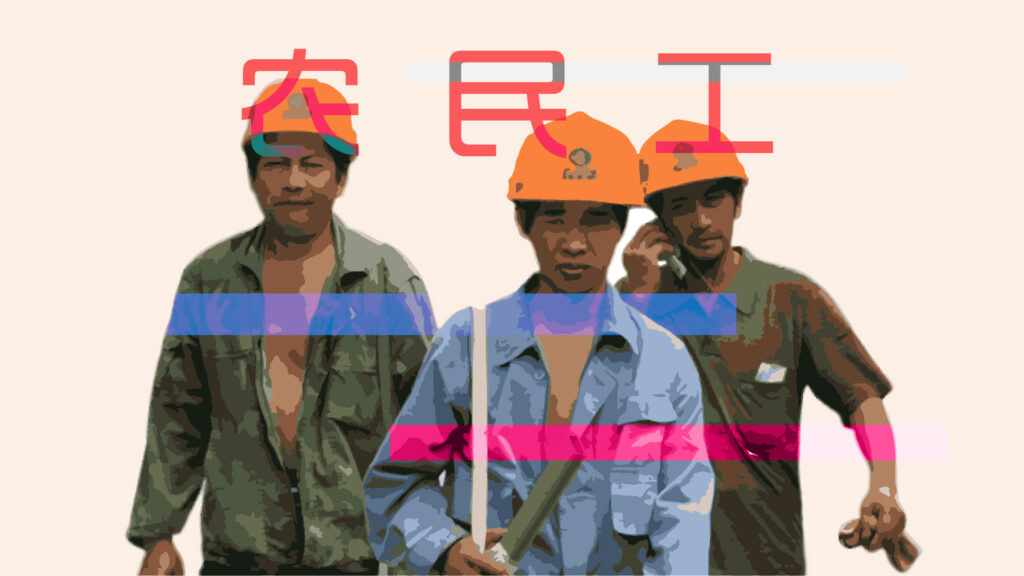
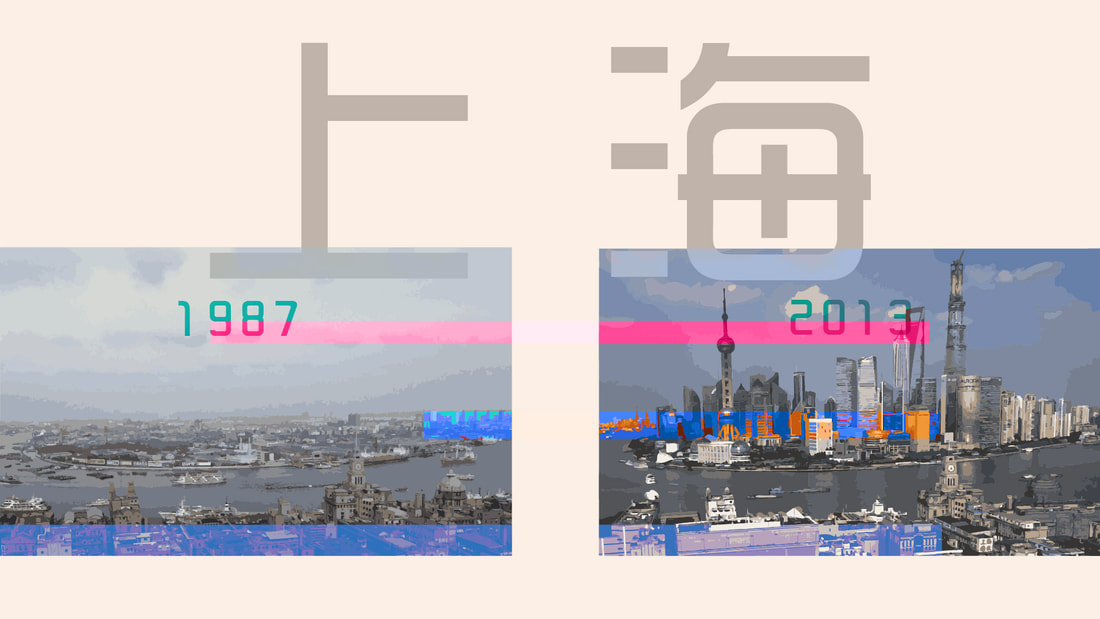
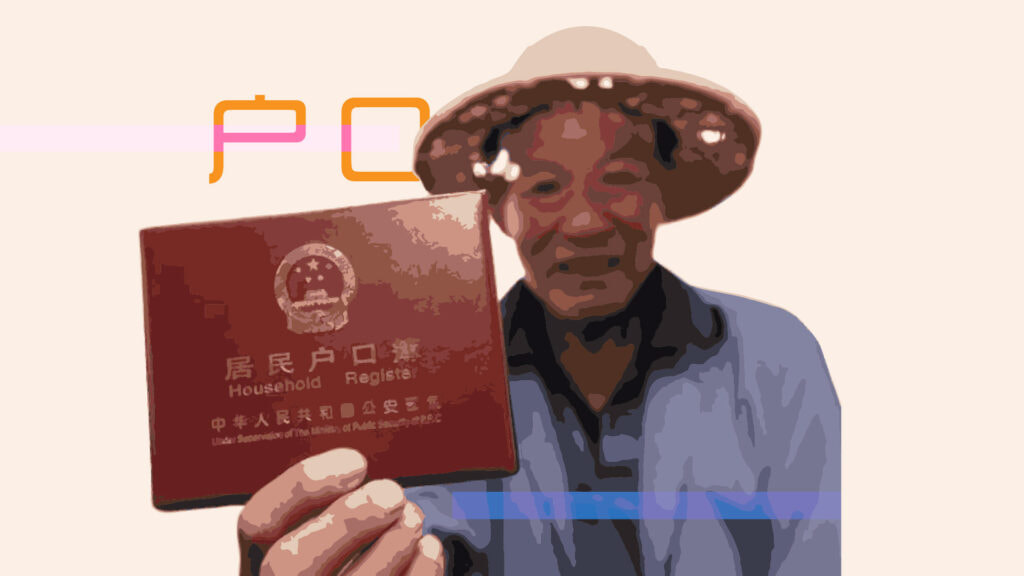
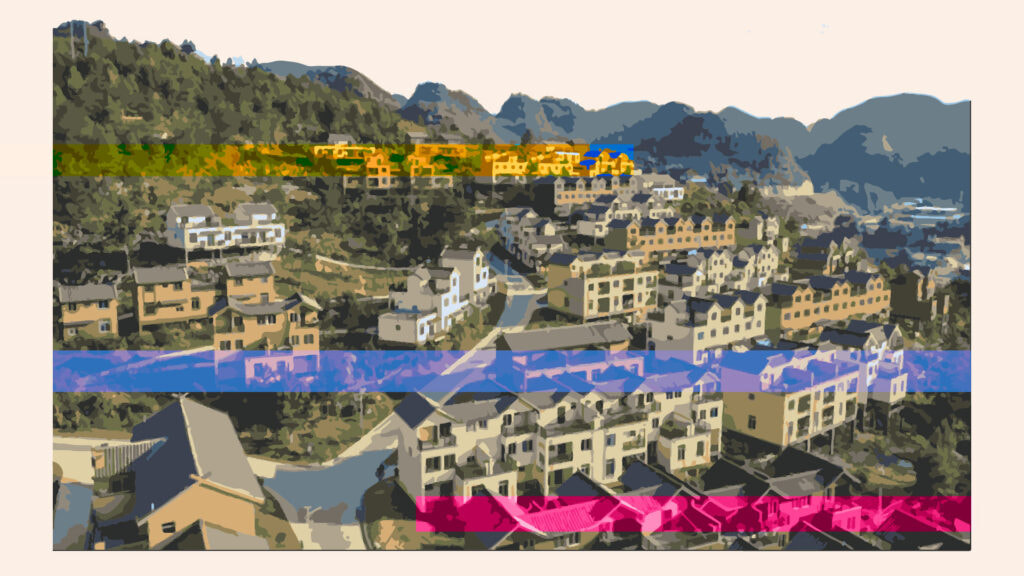
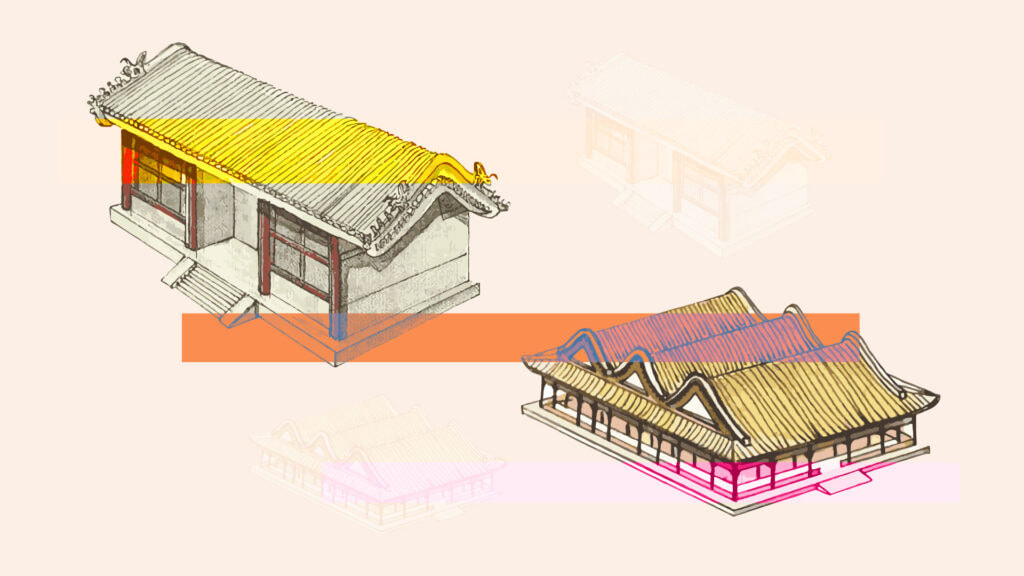

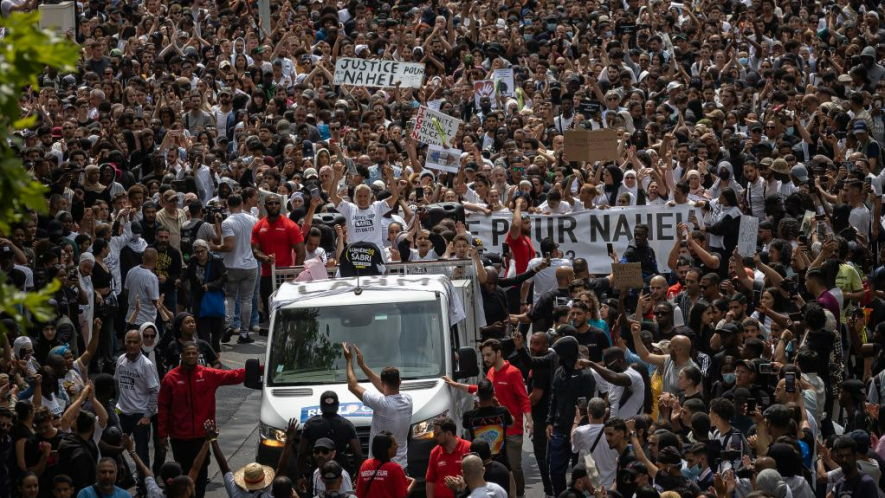
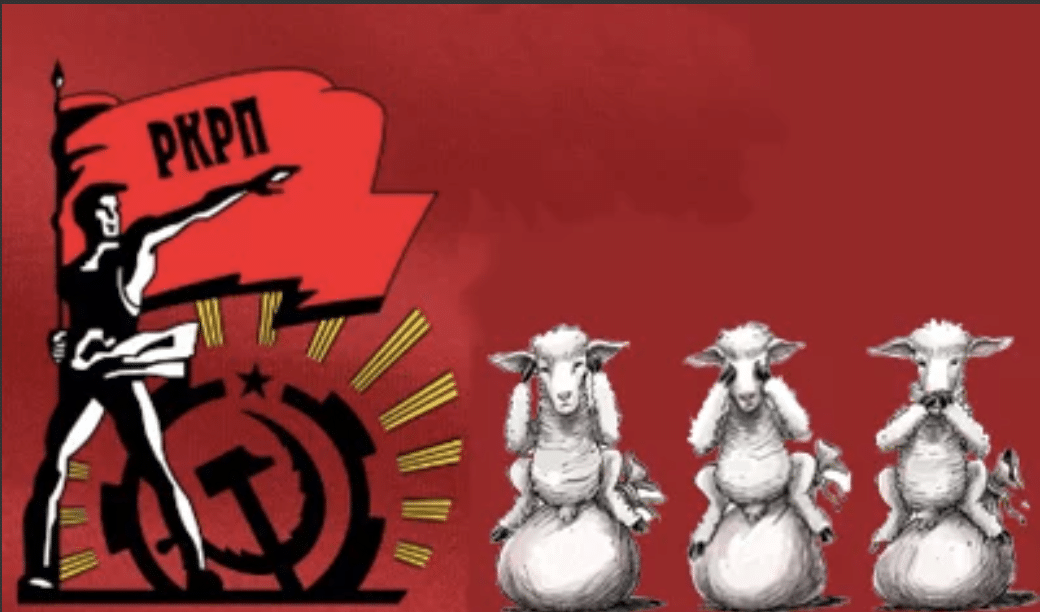
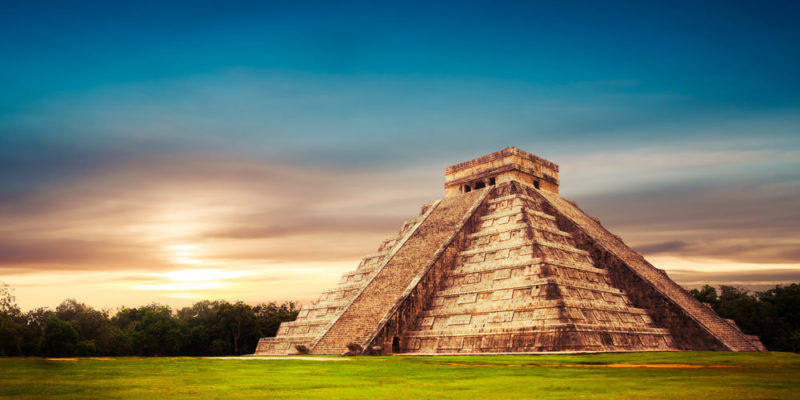

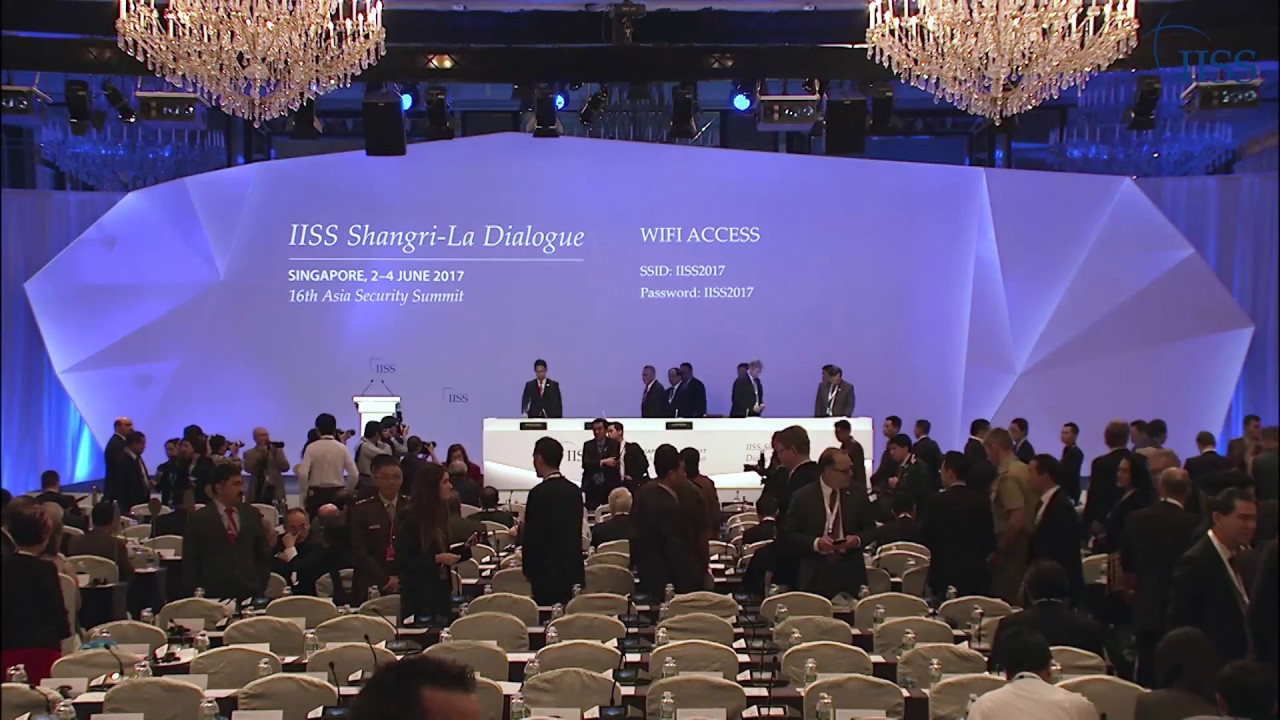
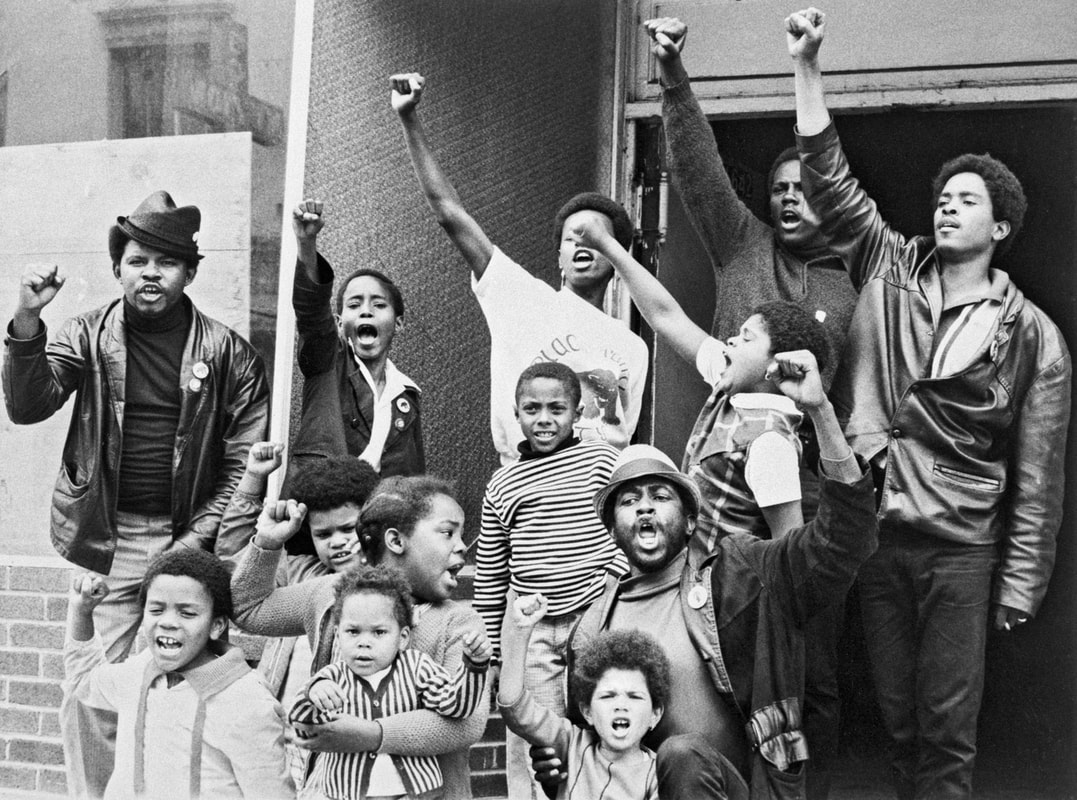
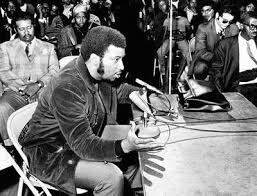
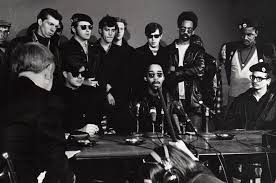
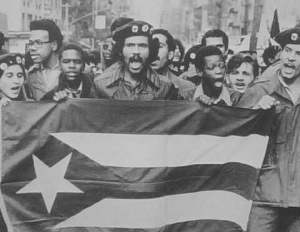
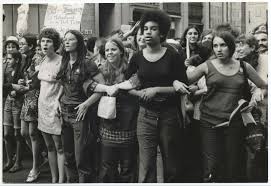
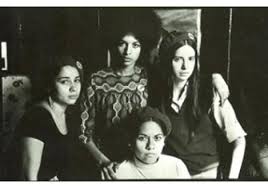
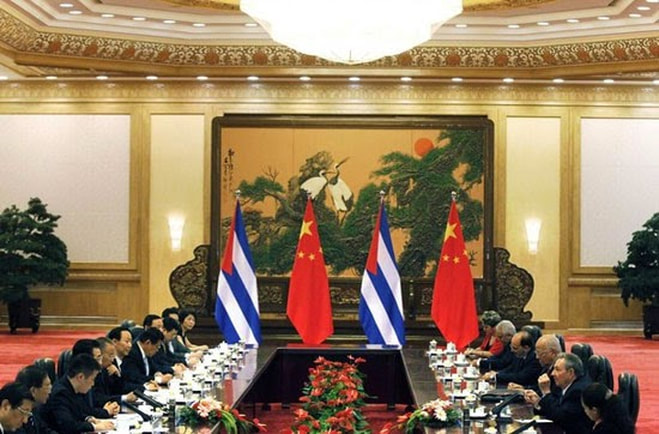
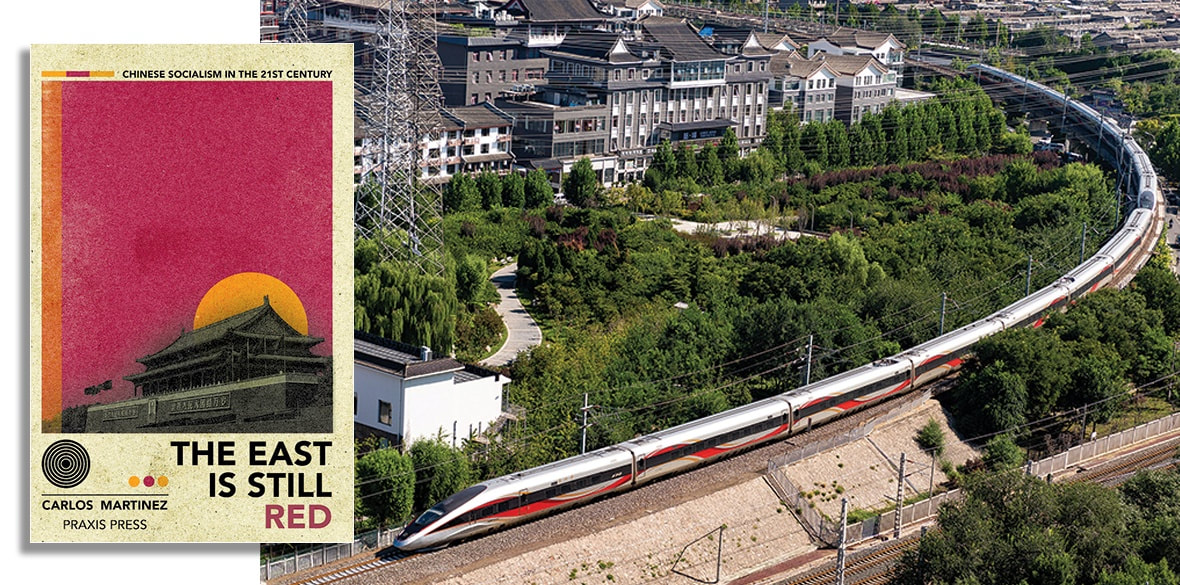
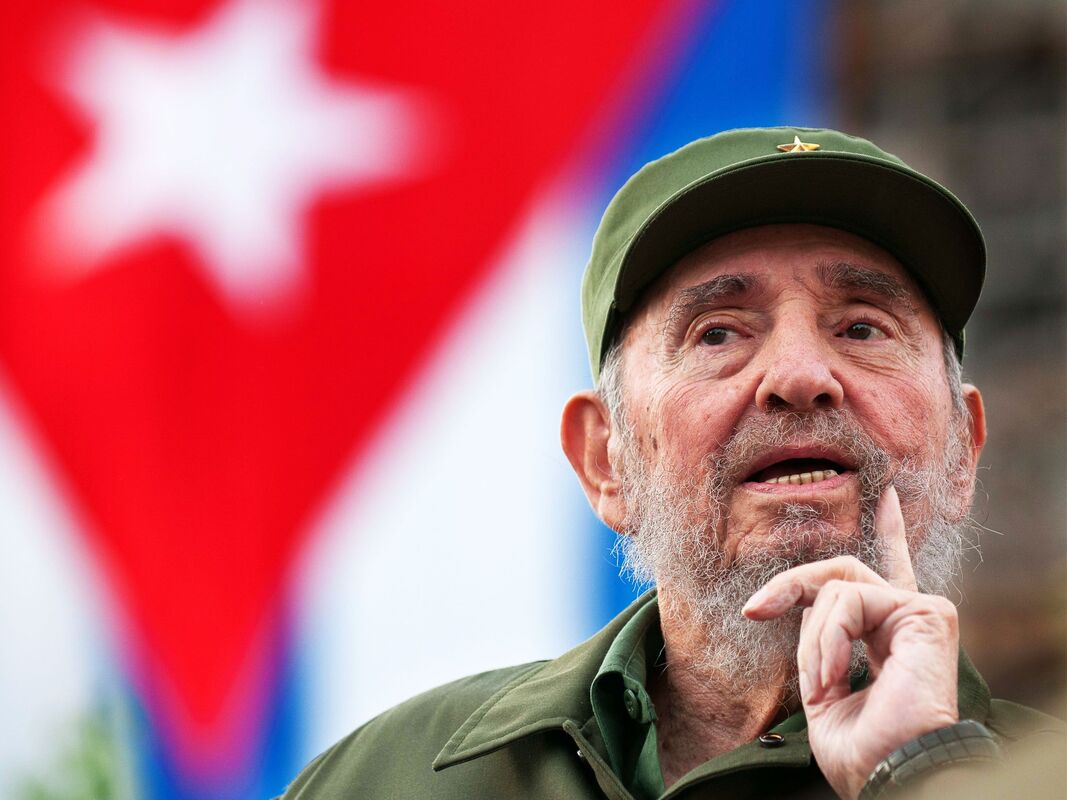
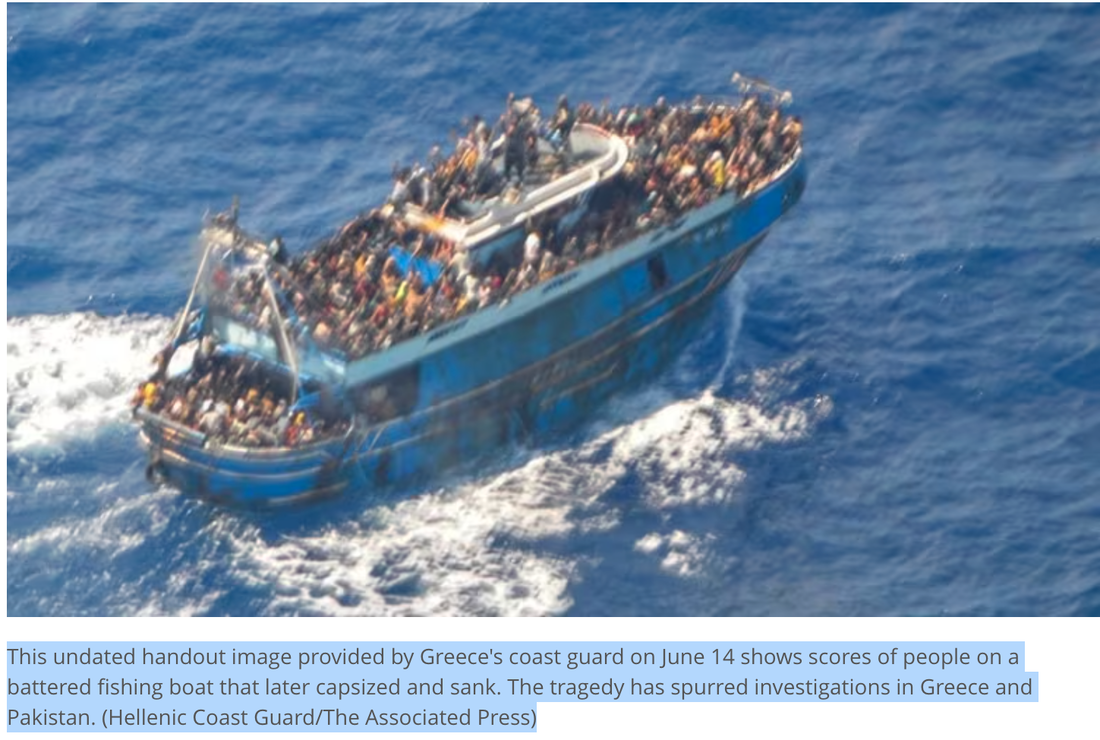

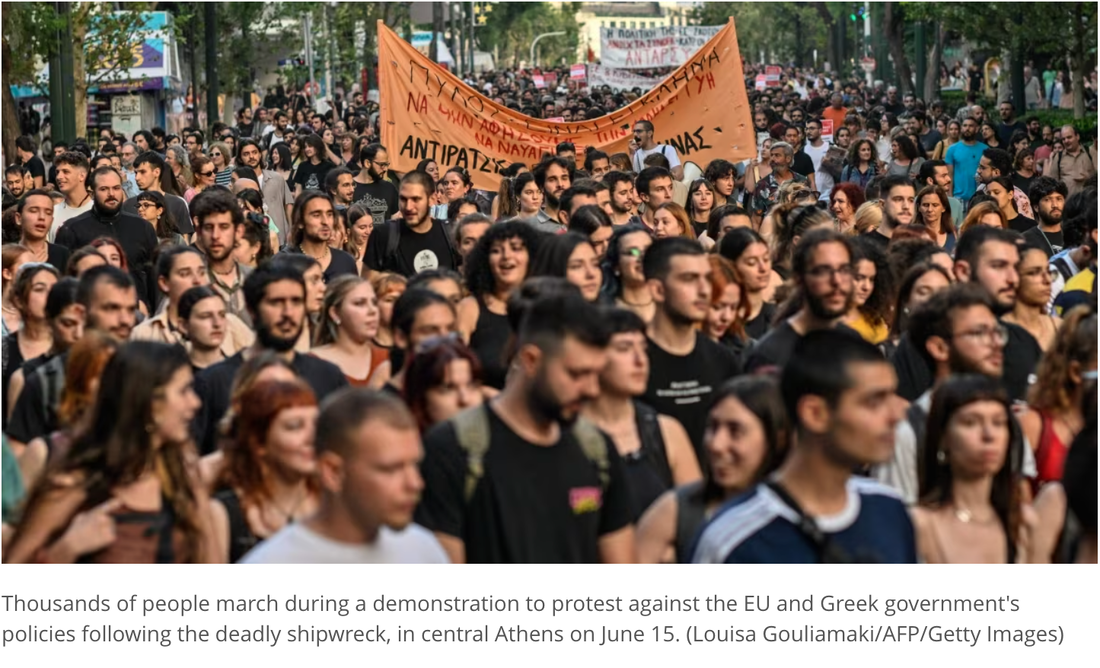
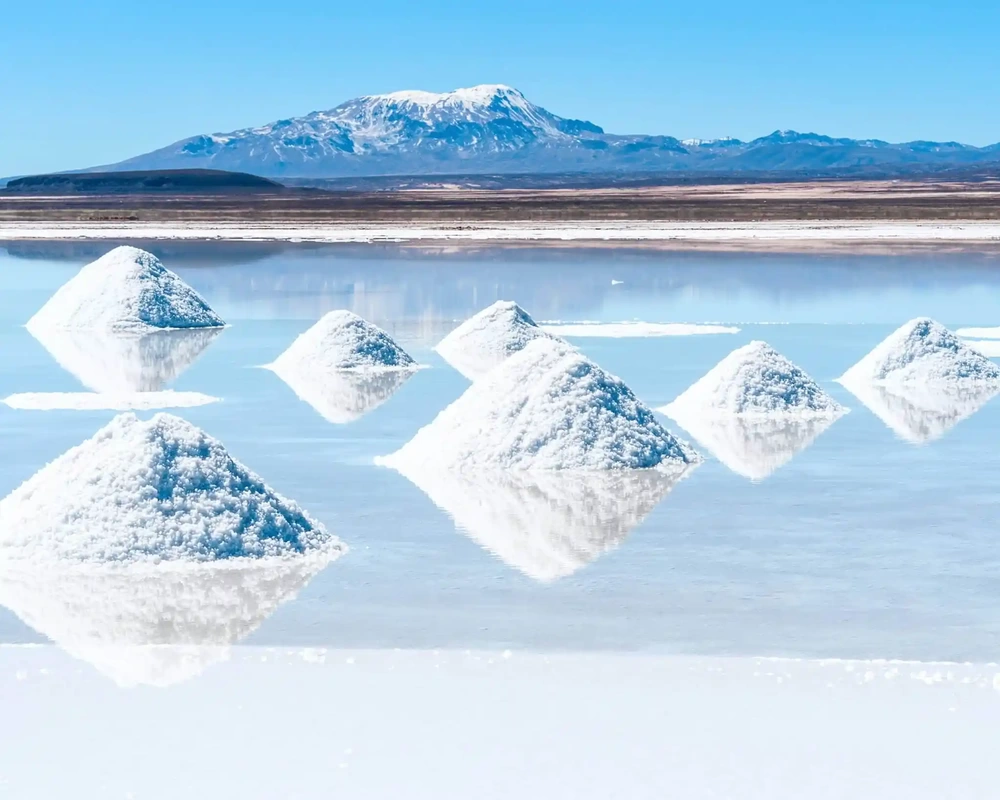
 RSS Feed
RSS Feed